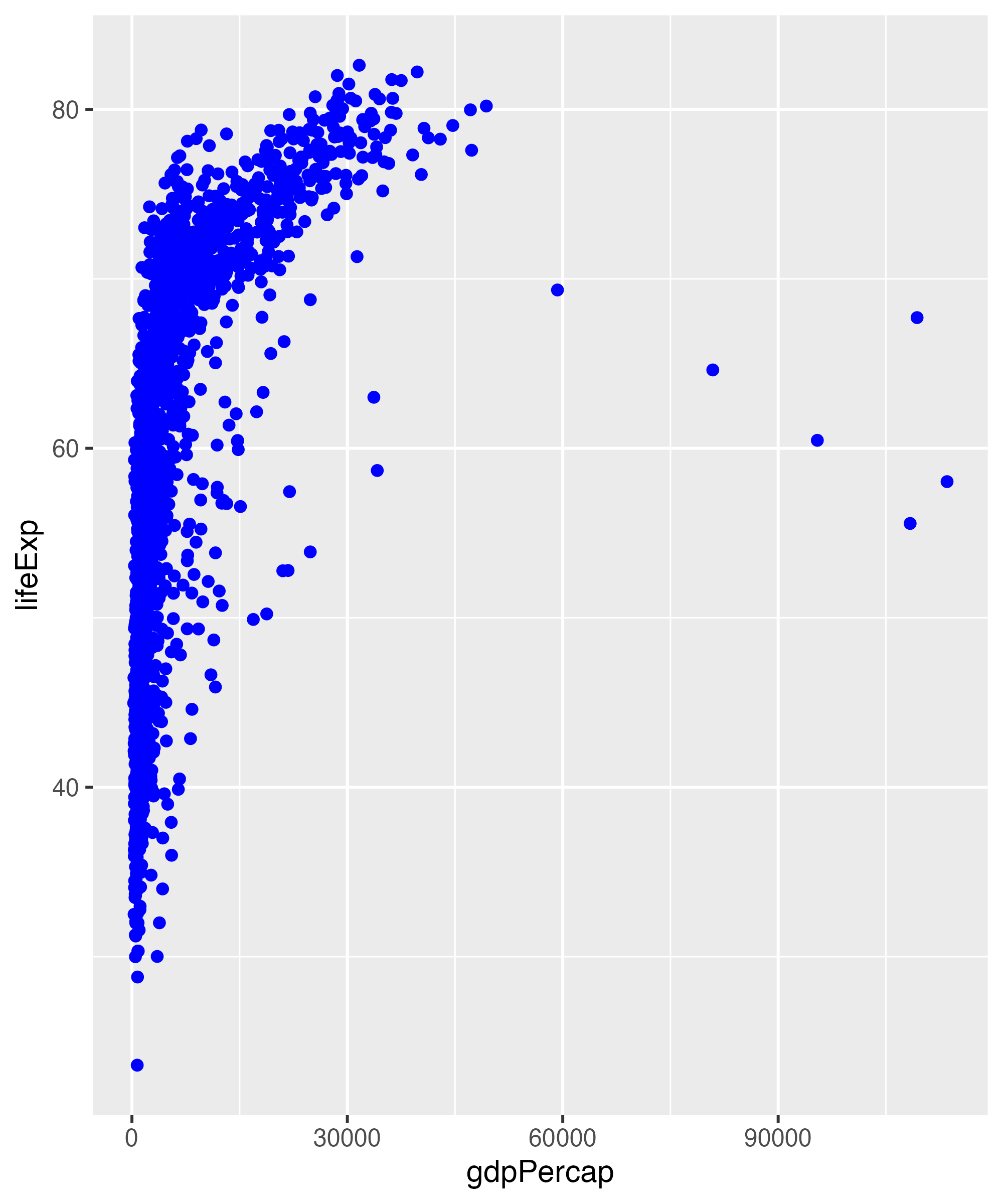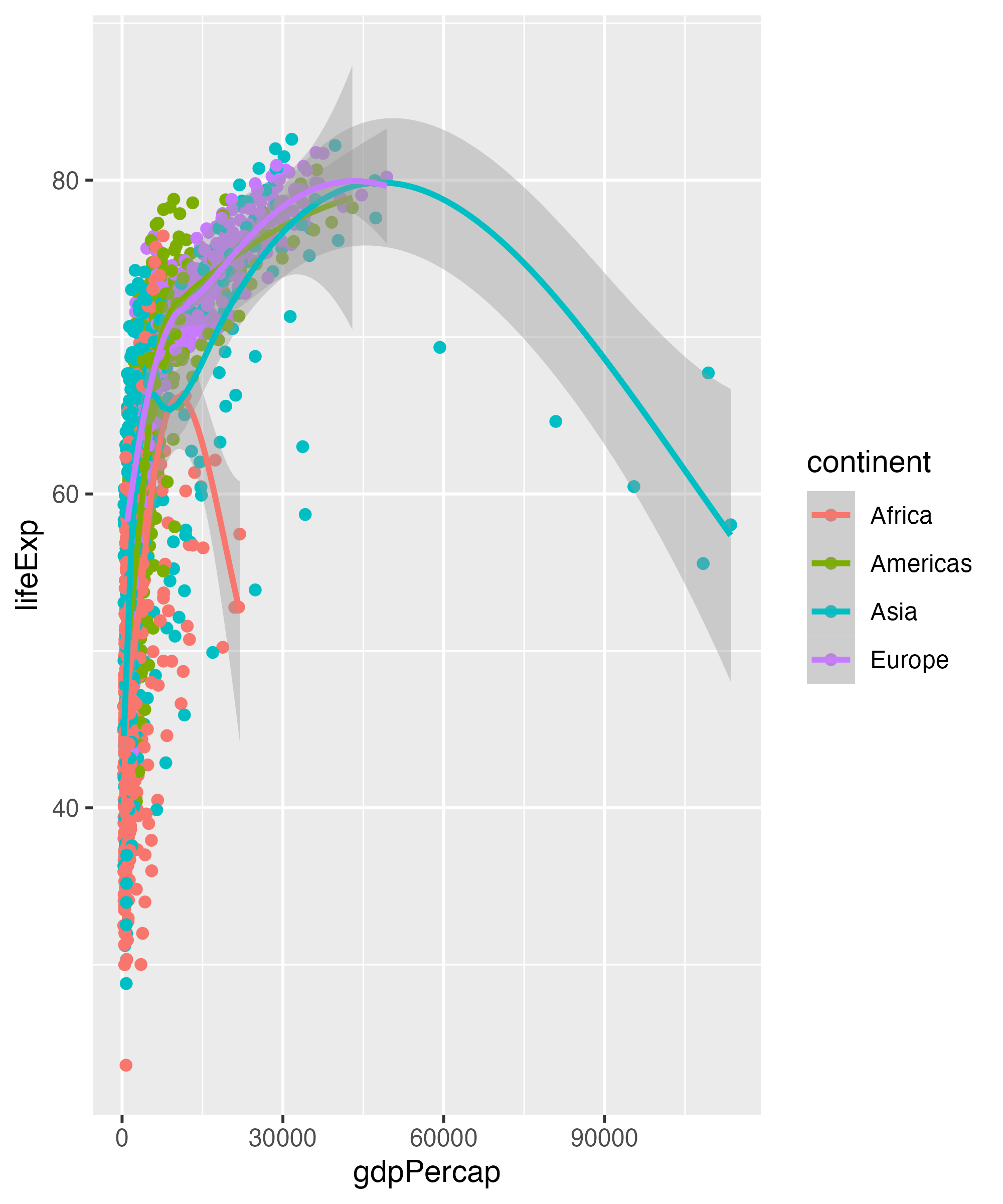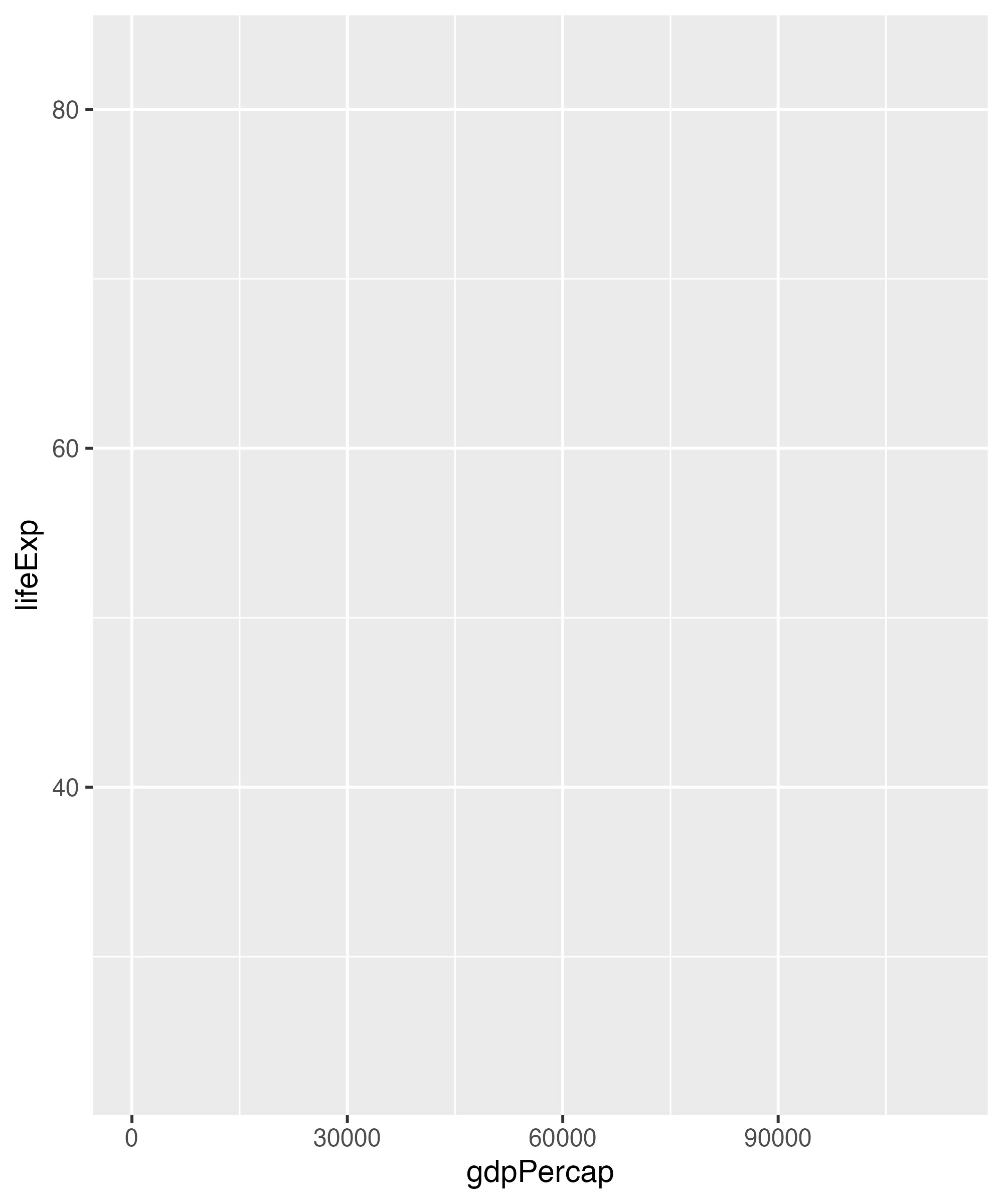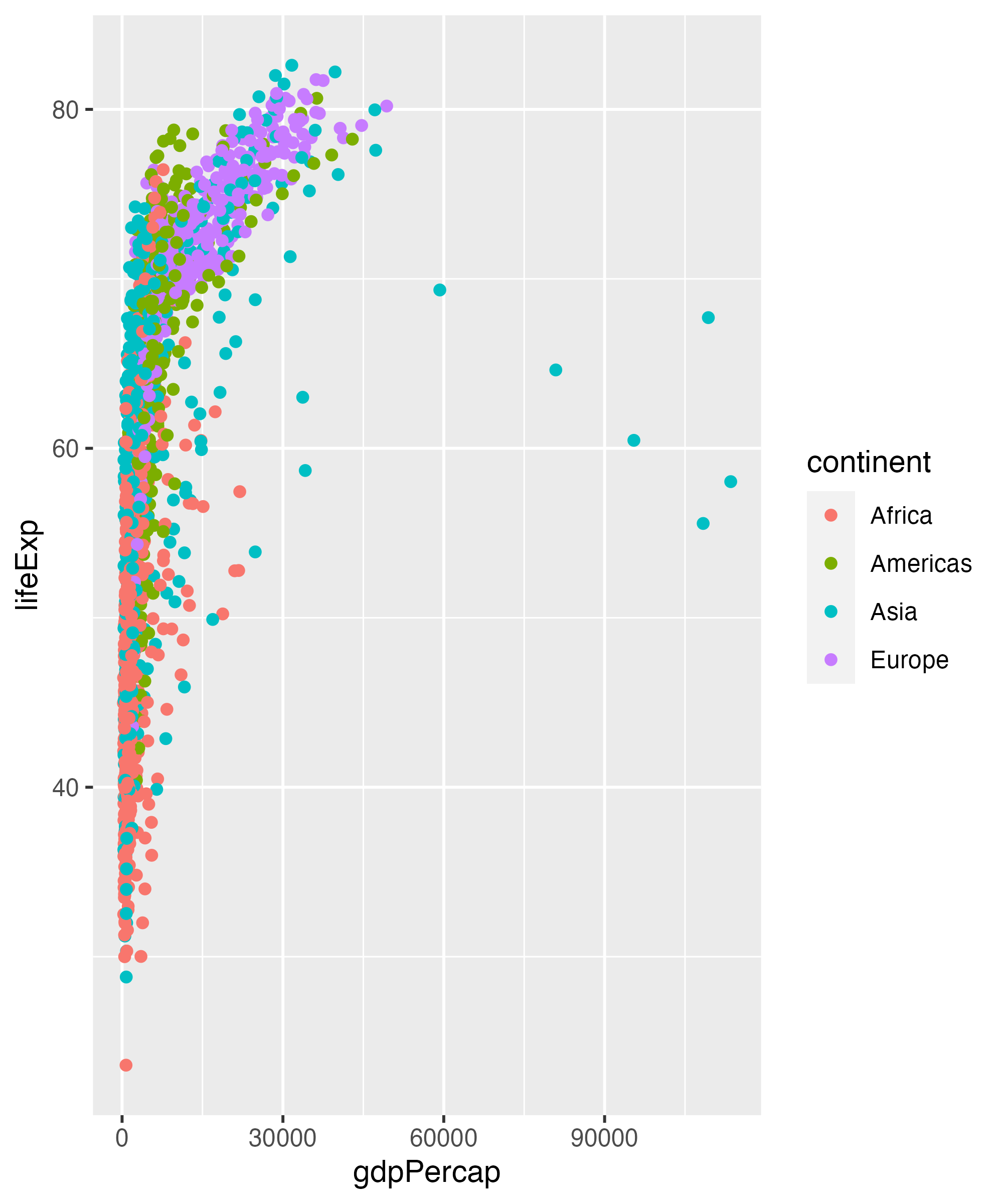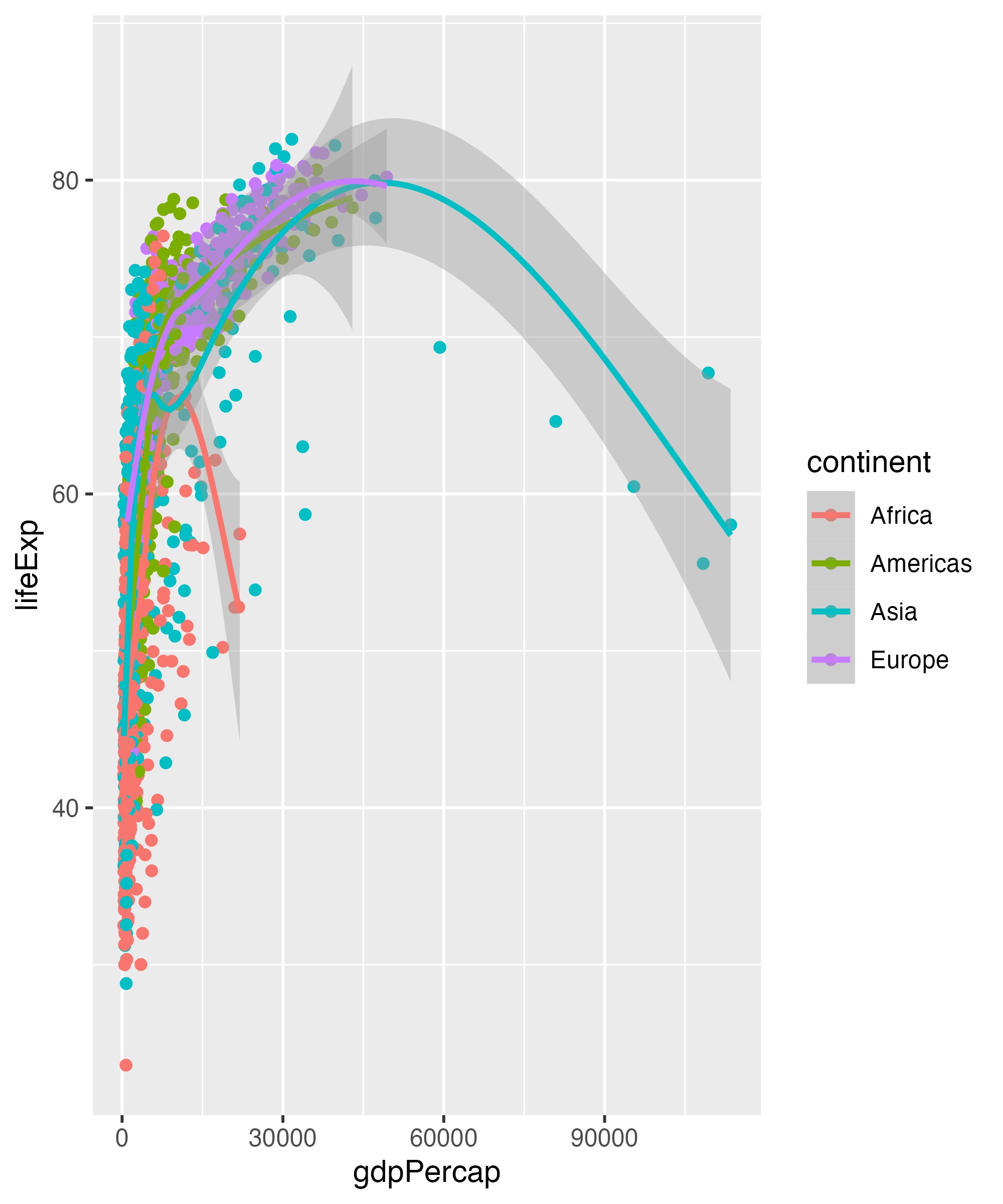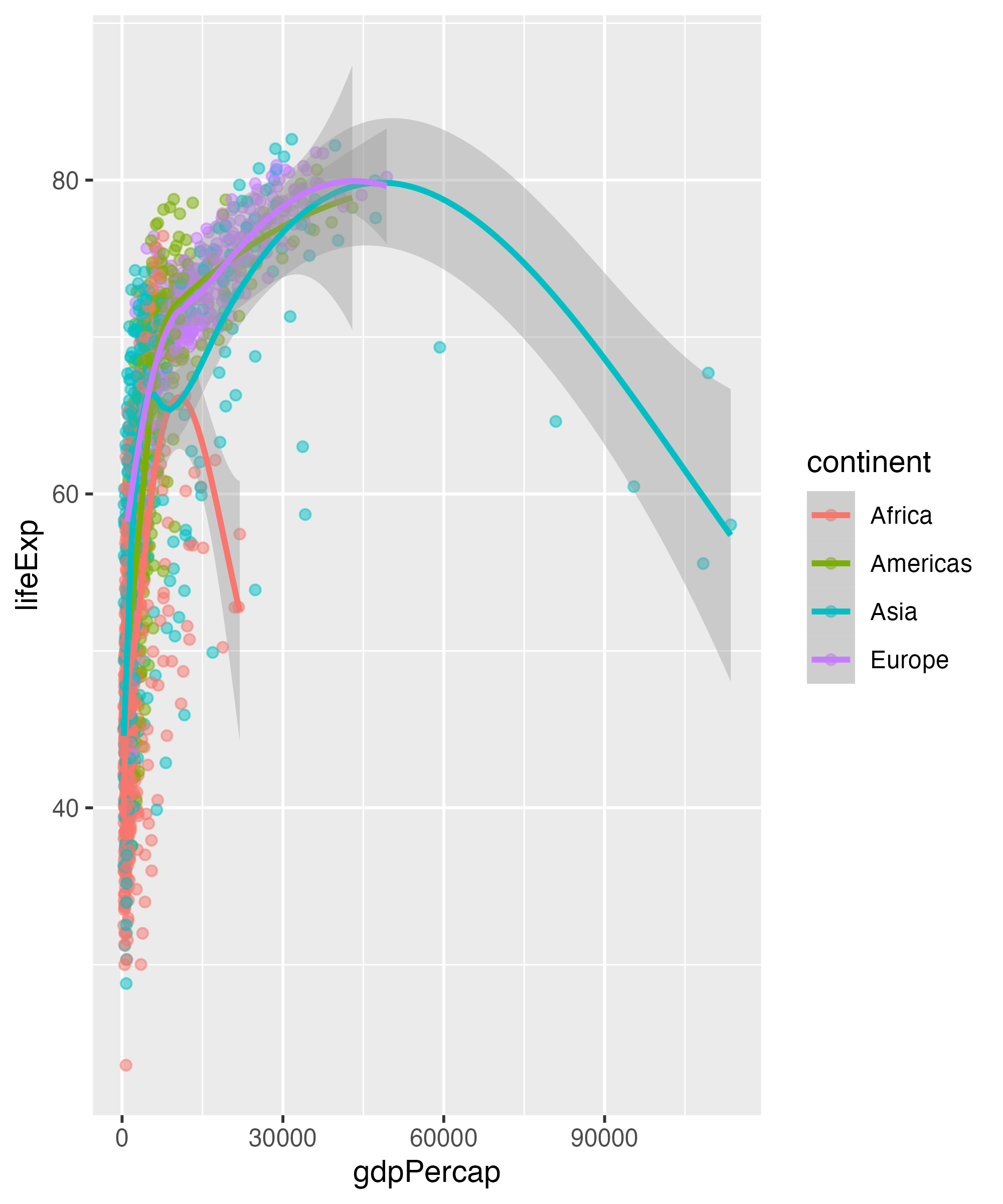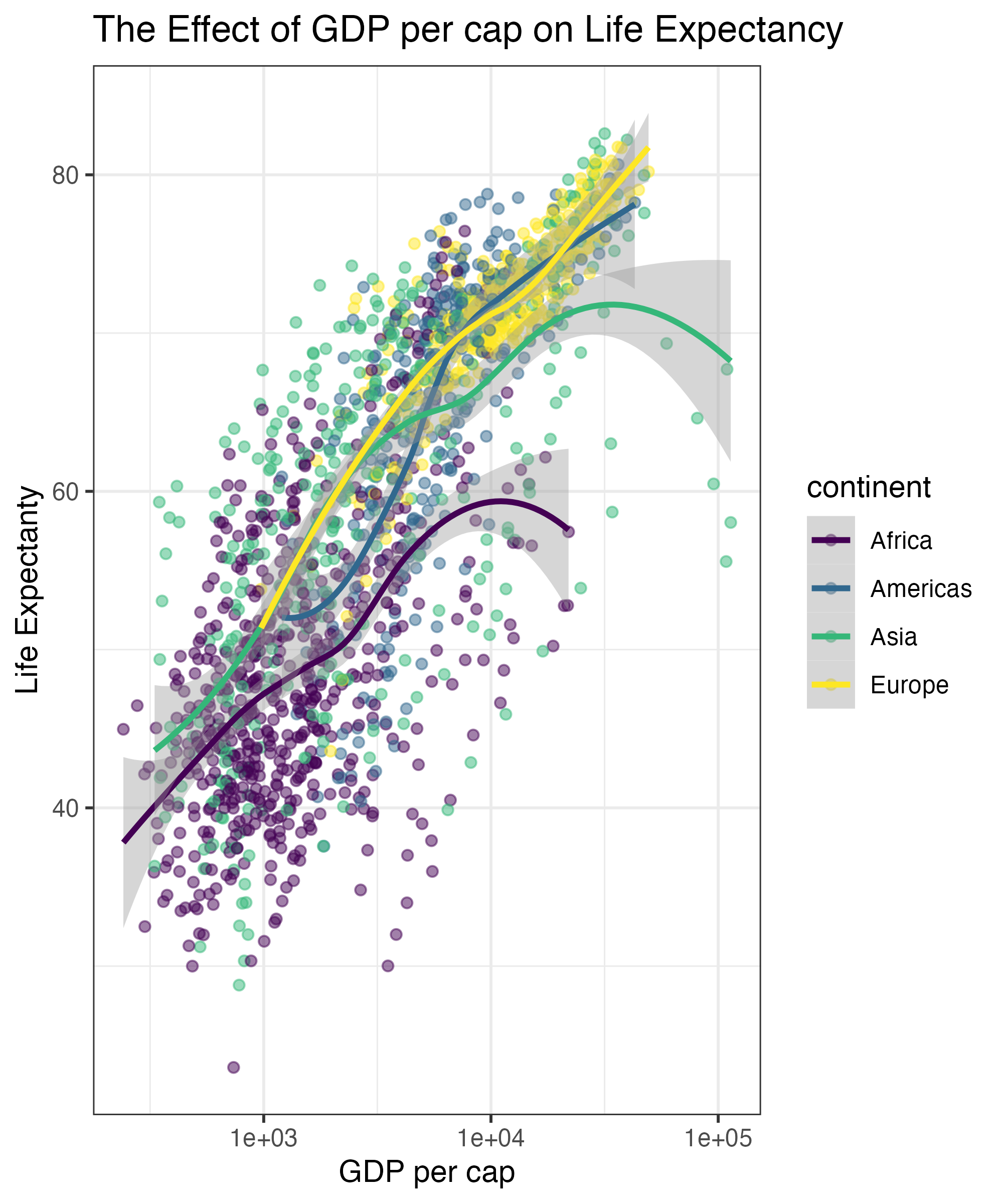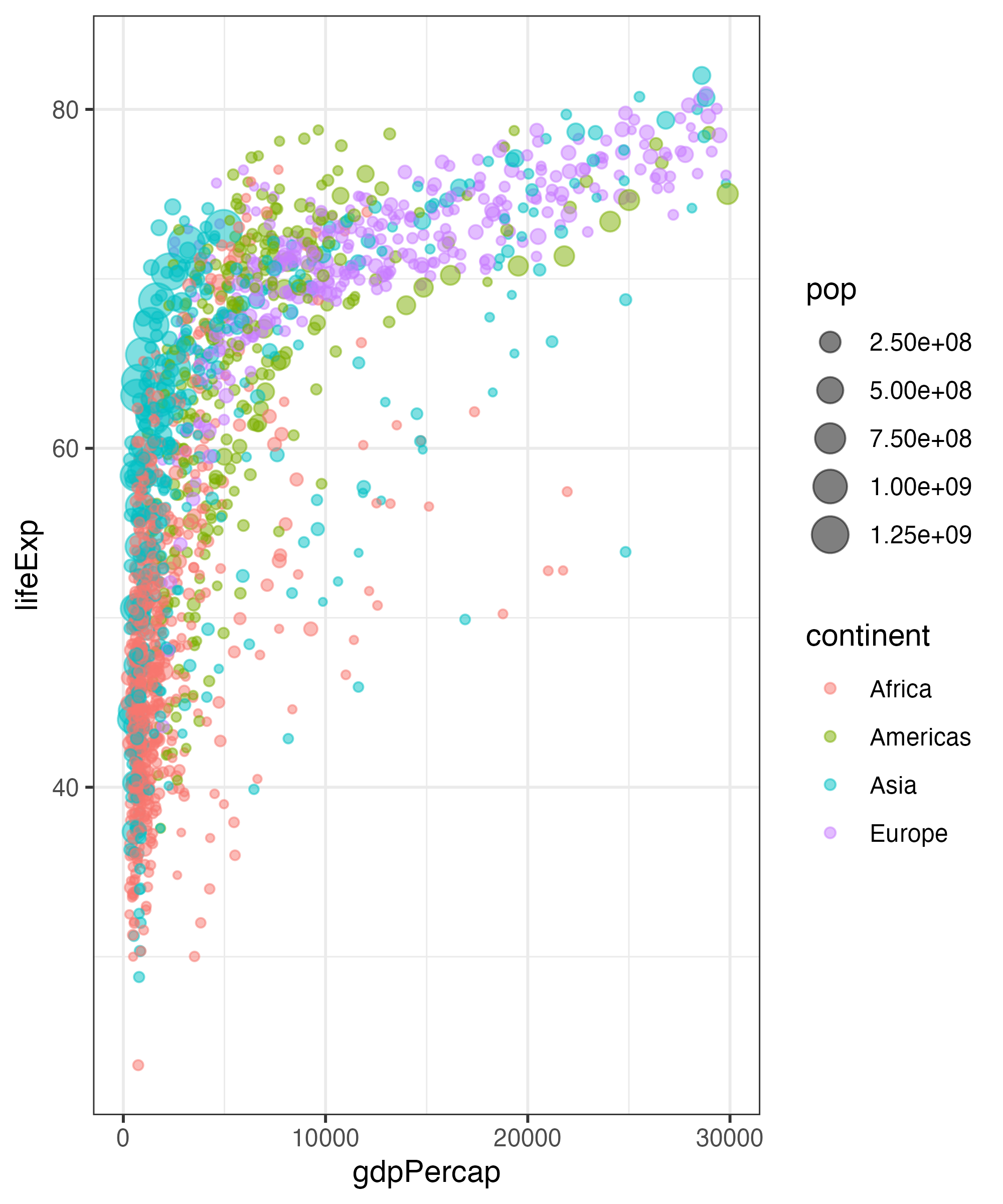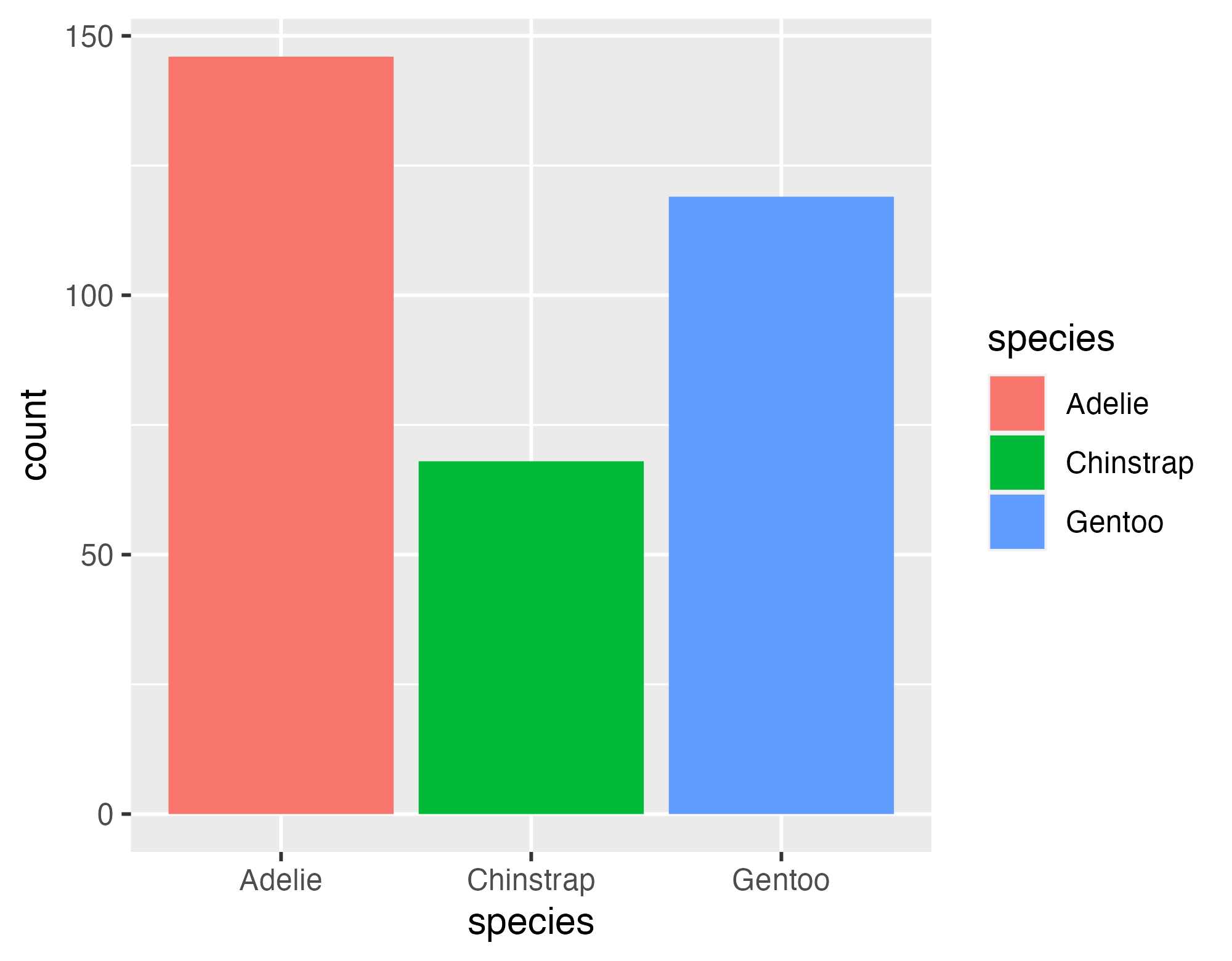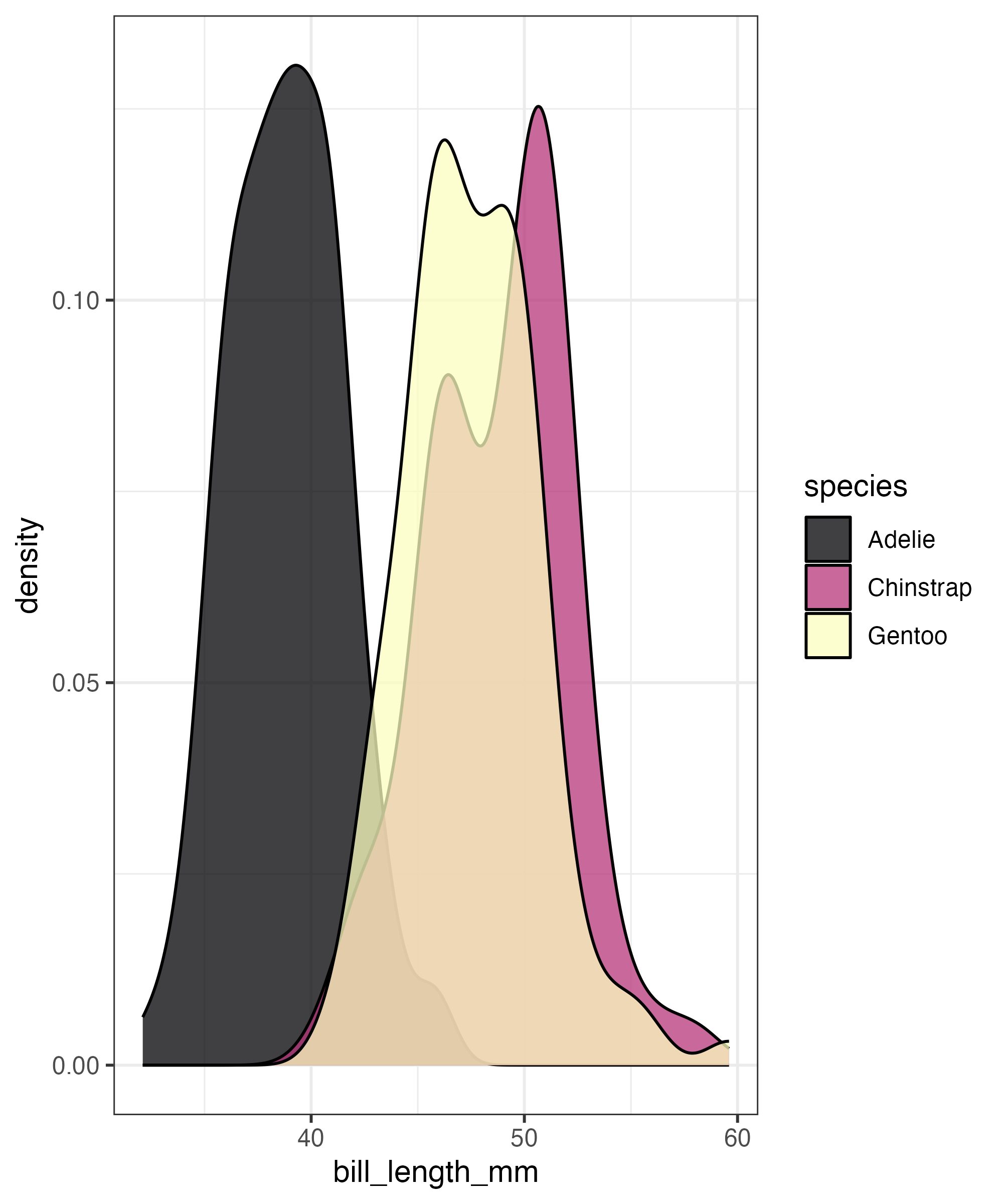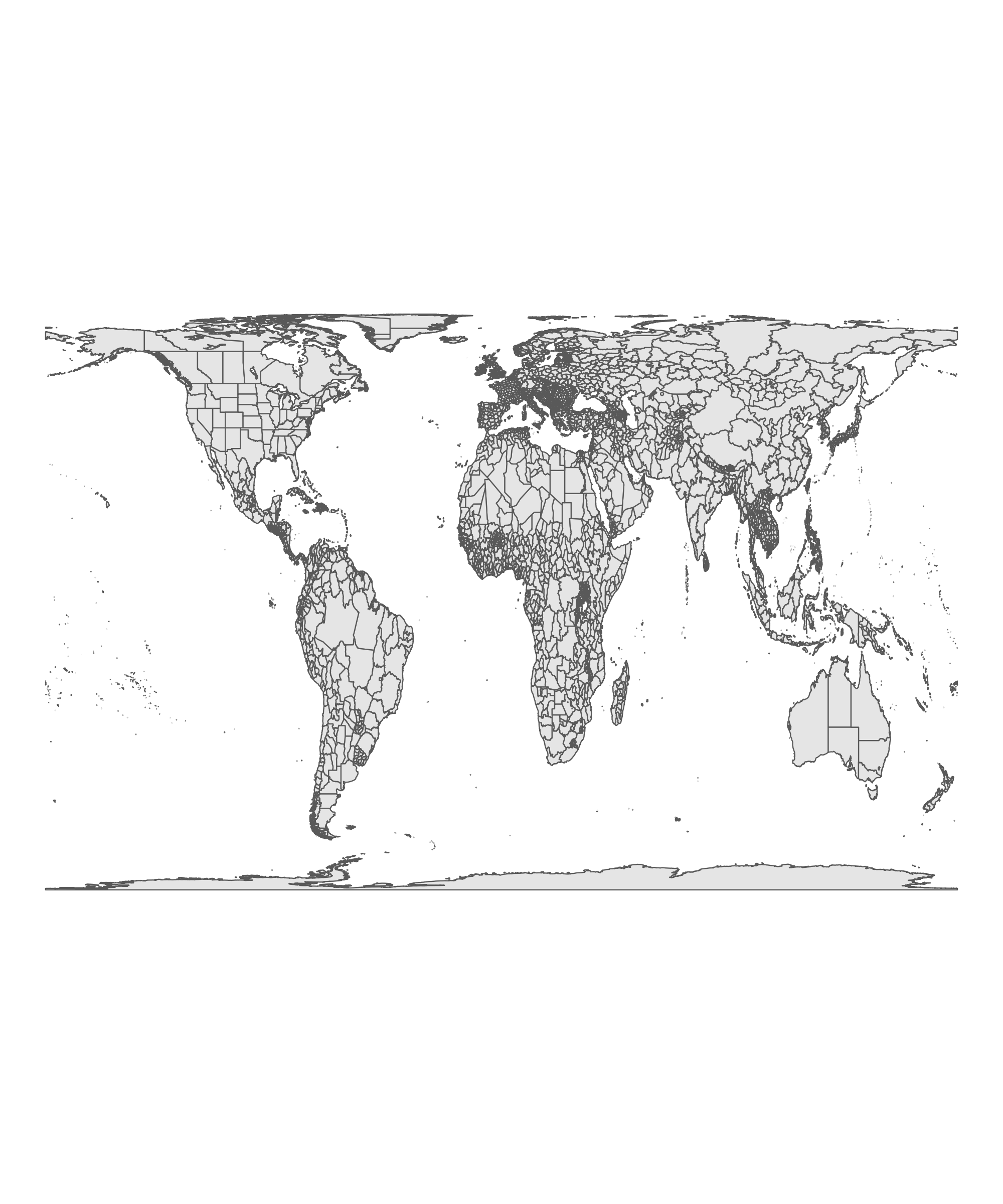par(mfrow = c(2,2))
plot(penguins$bill_length_mm,
penguins$body_mass_g,
xlab = "Bill Length(mm)",
ylab = "Body Mass(g)")
hist(penguins$bill_length_mm,
xlim = c(30, 60))
plot(density(penguins$bill_length_mm))
plot(penguins$bill_length_mm,
penguins$body_mass_g,
xlab = "Bill Length(mm)",
ylab = "Body Mass(g)")
abline(lm(body_mass_g~bill_length_mm, data = penguins))Getting Started in ggplot
Department of Political Science at Georgia State University
8/29/22
Where We Have Been
Expanding What We Know




Research Data Services
Our Team
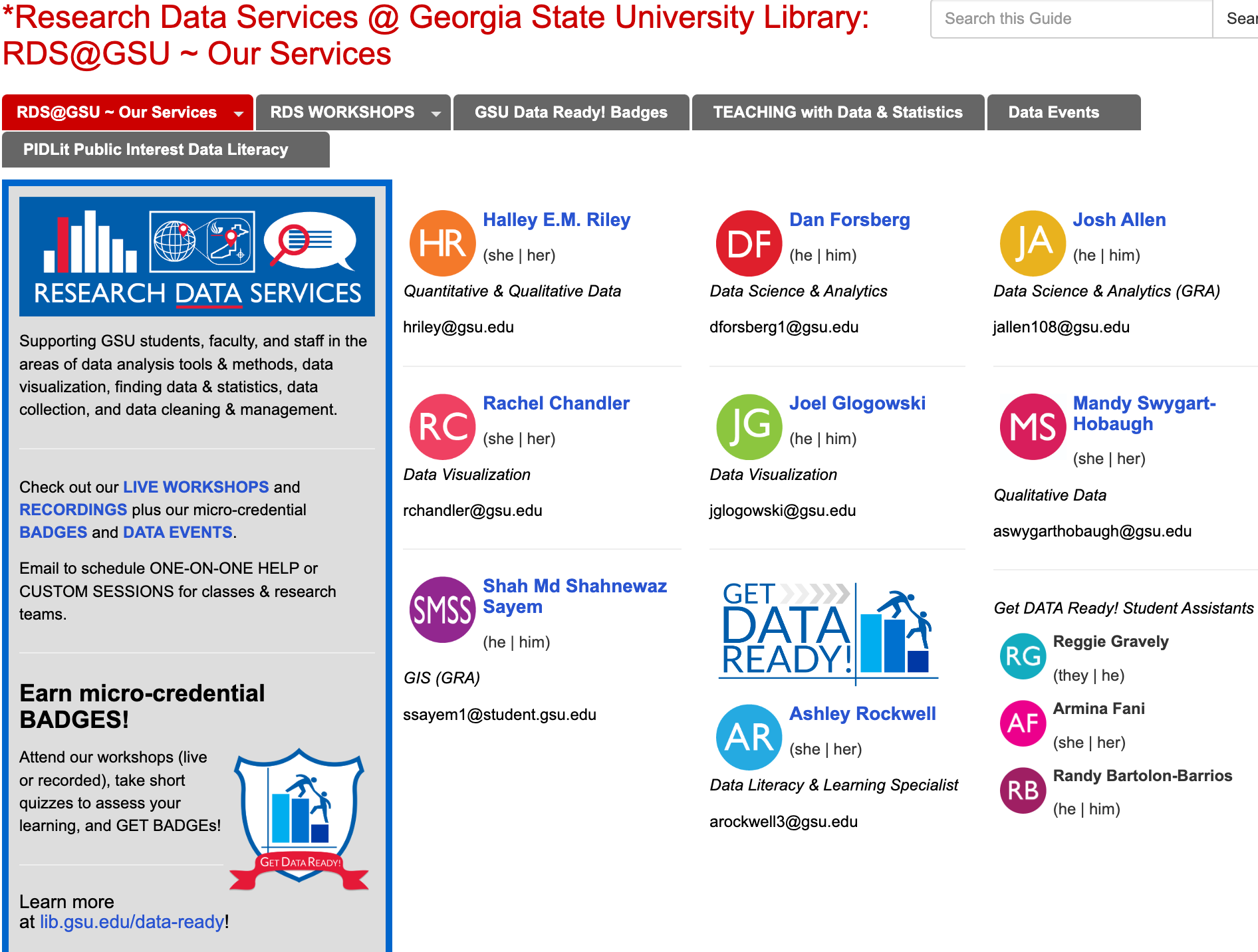
Get Ready Badges

How To Get the Badges

The Importance of Graphing
Why visualize your data?
The Dino Strikes
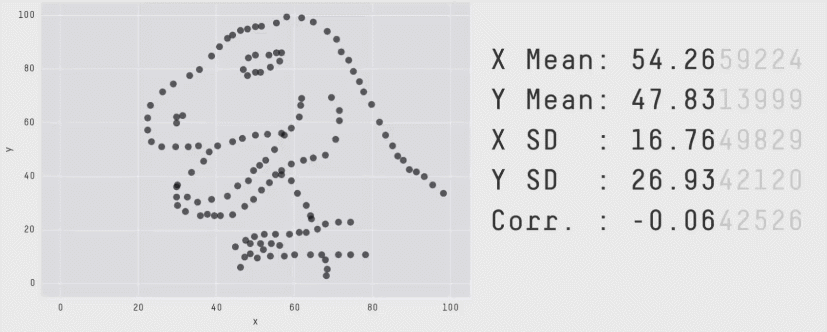
Why ggplot2?
The transferable skills from ggplot2 are not the idiosyncrasies of plotting syntax, but a powerful way of thinking about visualization, as a way of mapping between variables and the visual properties of geometric objects that you can perceive.
– Hadley Wickham
Why ggplot2?
You have probably heard of it but why use it?
Once we understand the “grammar” making figures becomes a lot easier
Tons of organizations use it
Flexibility
- Tons ways to customize appearance
- Lots of functions
- Lots of extensions
Reproducibility
- Doesn’t require you to remember each input from a drop down menu
- Defaults to universally usable formats
- Replaces itself automatically in your directory
The Grammar of Graphics
Grammar
“Good grammar is just the first step of creating a good sentence”
- How is the data related to the figure on the right?
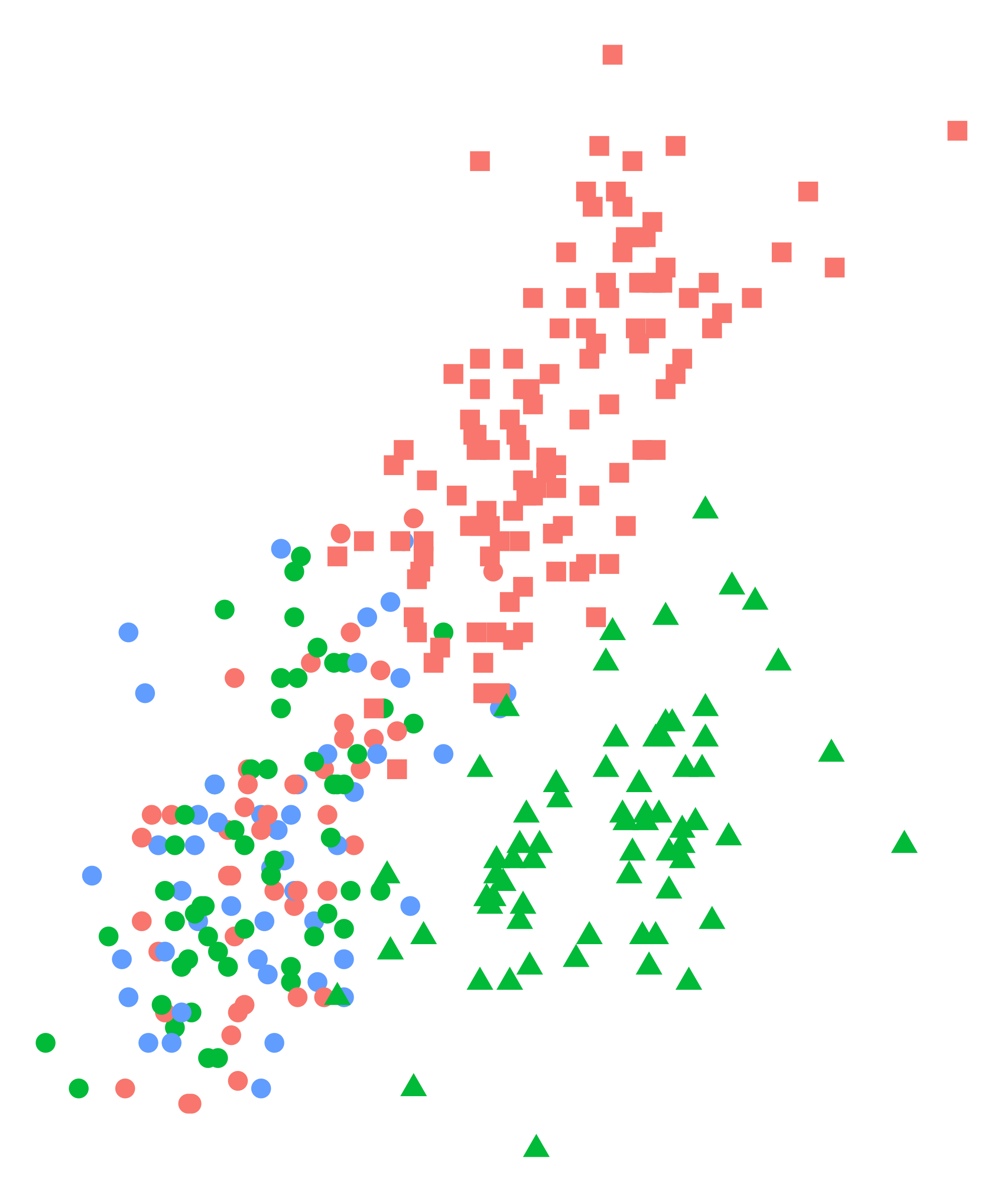
Building the Plot
Body Weight of Penguins and Bill Length
Penguins
Species
Island

Building the Plot
Body Weight of Penguins and Bill Length
Penguins
Species
Island
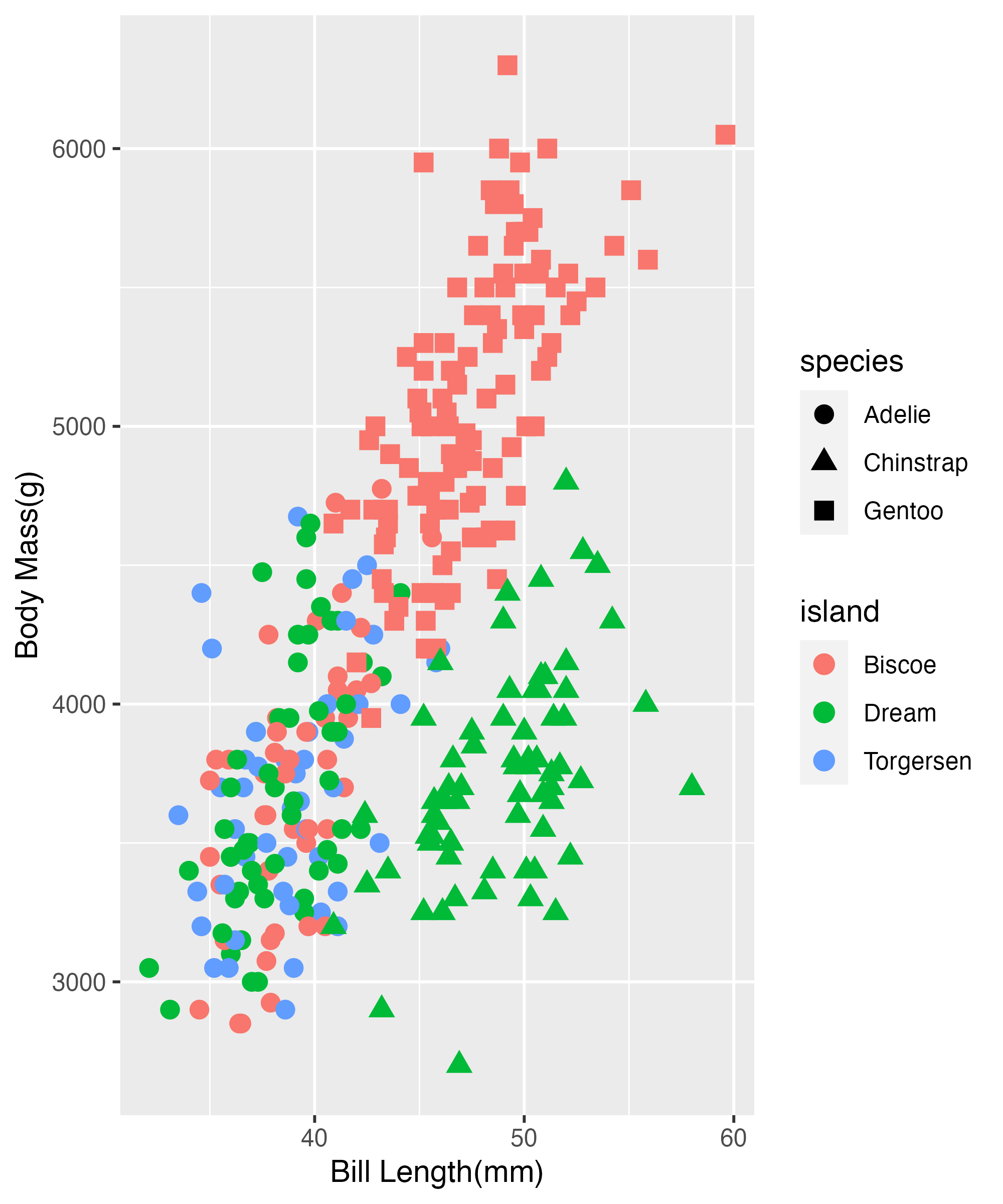
Building the Plot
Body Weight of Penguins and Bill Length
Penguins
Species
Island
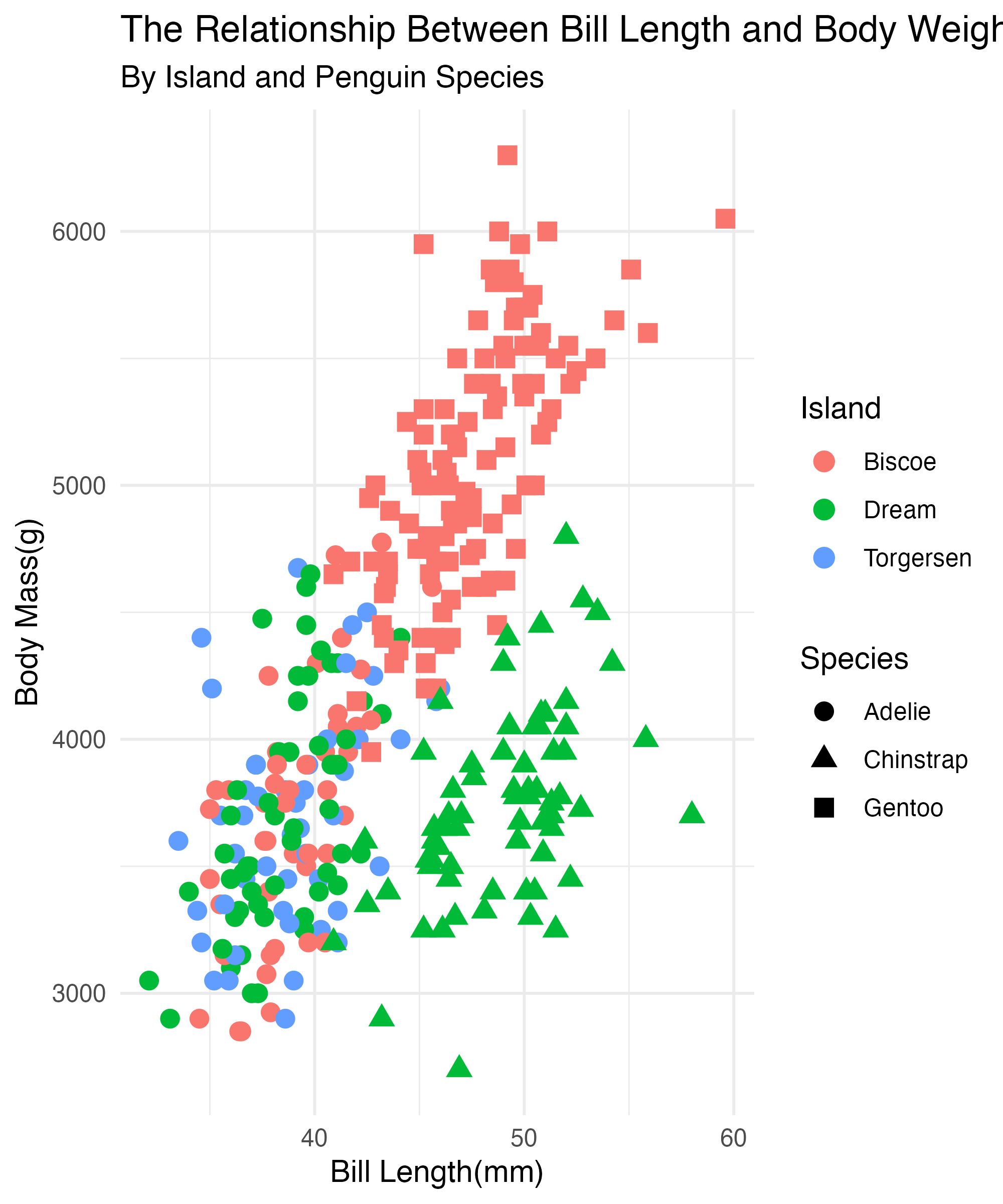
So How Did We go From?
This
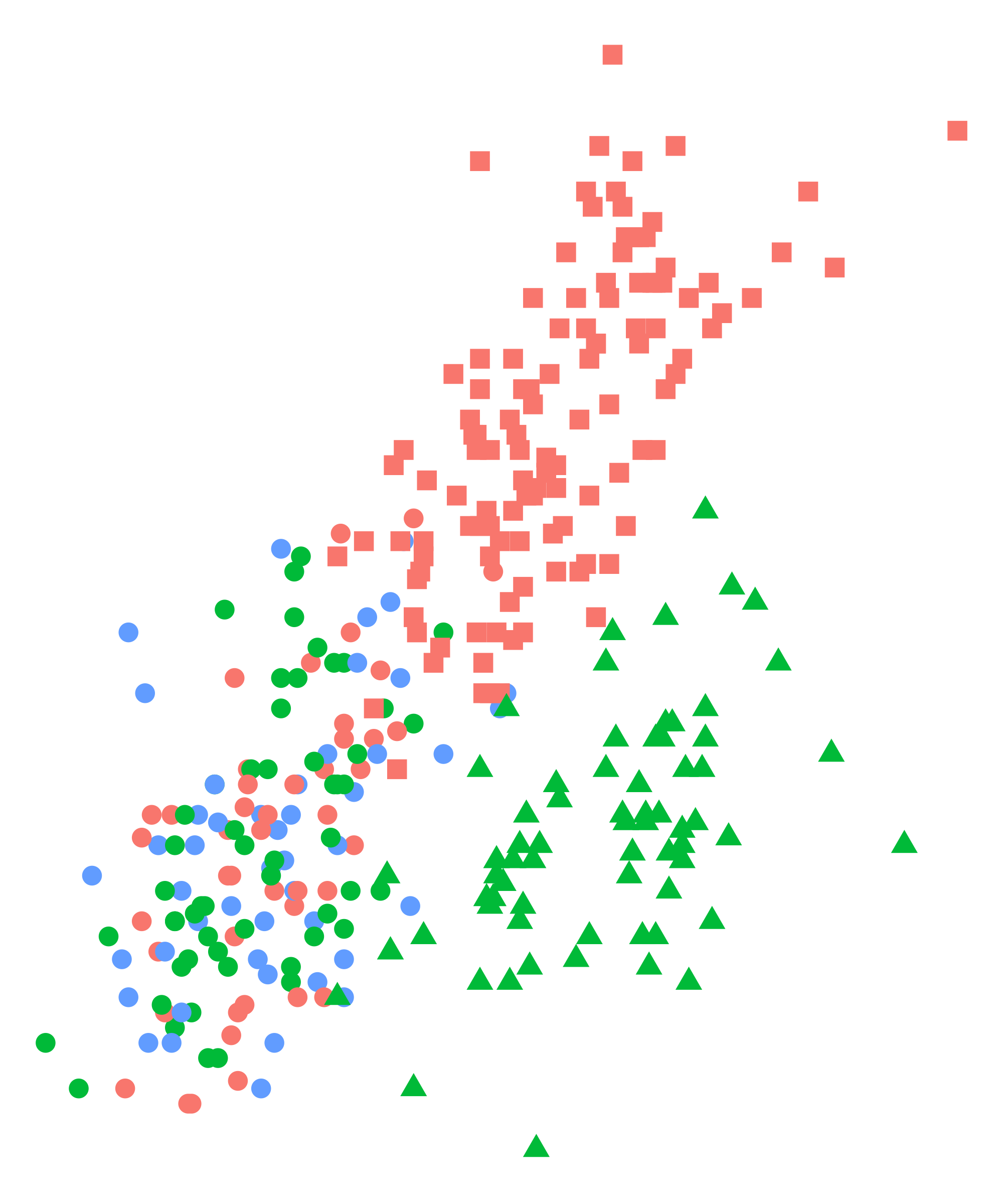
To This
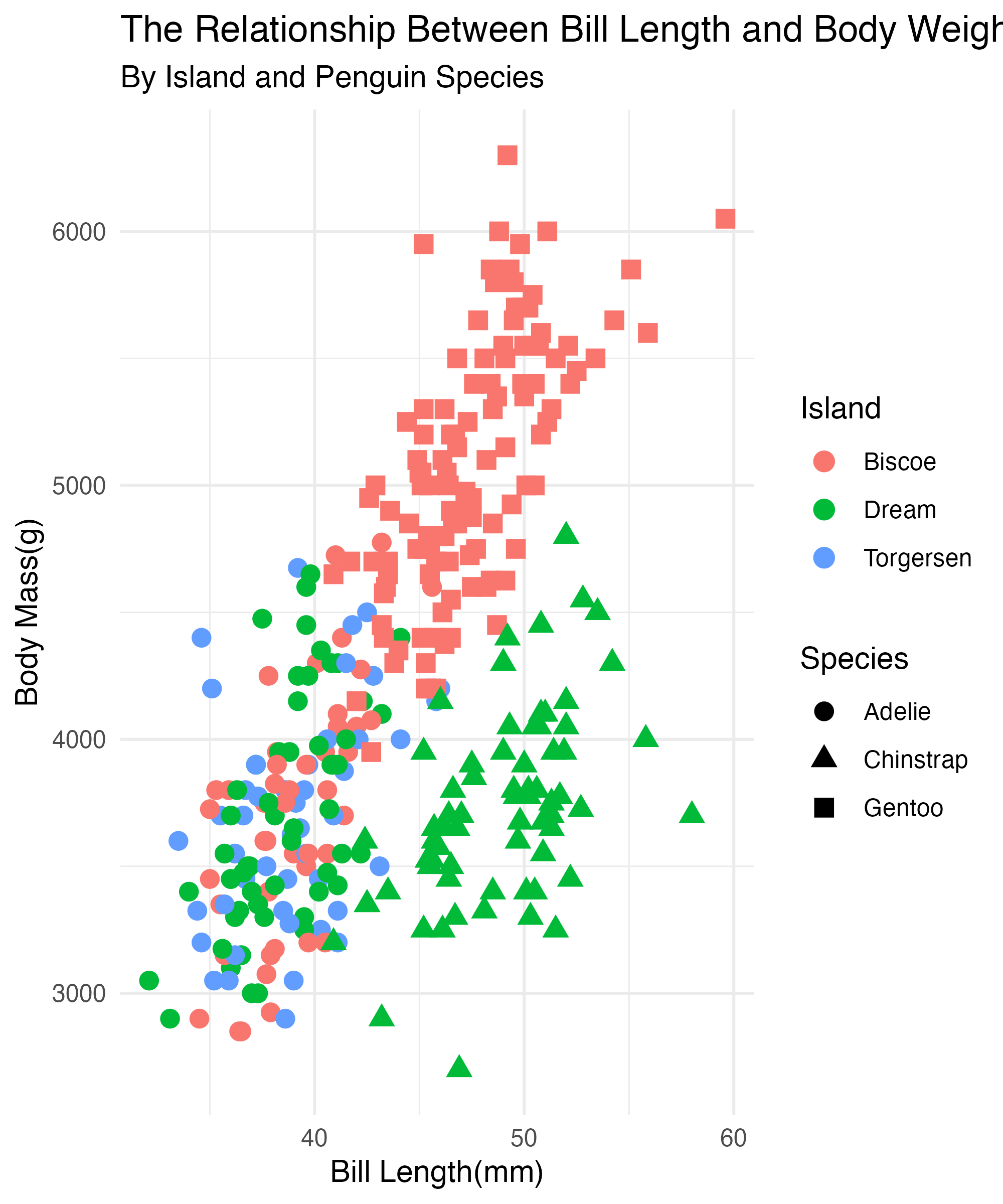
Making Plots
The Grammar
| Component | Function | Explanation |
|---|---|---|
| Data |
ggplot(data)
|
The raw data that you want to visualise. |
| Aesthetics |
aes()
|
Aesthetic mappings between variables and visual properties. |
| Geometries |
geom_*()
|
The geometric shapes representing the data. |
| Statistics |
stat_*()
|
The statistical transformations applied to the data. |
| Scales |
scale_*()
|
Maps between the data and the aesthetic dimensions. |
| Coordinate System |
coord_*()
|
Maps data into the plane of the data rectangle. |
| Facets |
facet_*()
|
The arrangement of the data into a grid of plots. |
| Visual Themes |
theme() and theme_*()
|
The overall visual defaults of a plot. |
Where do they go?
Plotting Data
| country | continent | year | lifeExp | pop | gdpPercap |
|---|---|---|---|---|---|
| Afghanistan | Asia | 1952 | 28.801 | 8425333 | 779.4453 |
| Afghanistan | Asia | 1957 | 30.332 | 9240934 | 820.8530 |
| Afghanistan | Asia | 1962 | 31.997 | 10267083 | 853.1007 |
| Afghanistan | Asia | 1967 | 34.020 | 11537966 | 836.1971 |
| Afghanistan | Asia | 1972 | 36.088 | 13079460 | 739.9811 |
| Afghanistan | Asia | 1977 | 38.438 | 14880372 | 786.1134 |
| Afghanistan | Asia | 1982 | 39.854 | 12881816 | 978.0114 |
| Afghanistan | Asia | 1987 | 40.822 | 13867957 | 852.3959 |
| Afghanistan | Asia | 1992 | 41.674 | 16317921 | 649.3414 |
| Afghanistan | Asia | 1997 | 41.763 | 22227415 | 635.3414 |
Here is your shell script
Activity
Add color, size, alpha, and shape aesthetics to your graph.
Be bold be brave! Experiment!
What happens when you add more than one aesthetic?
05:00
How would you make this plot?
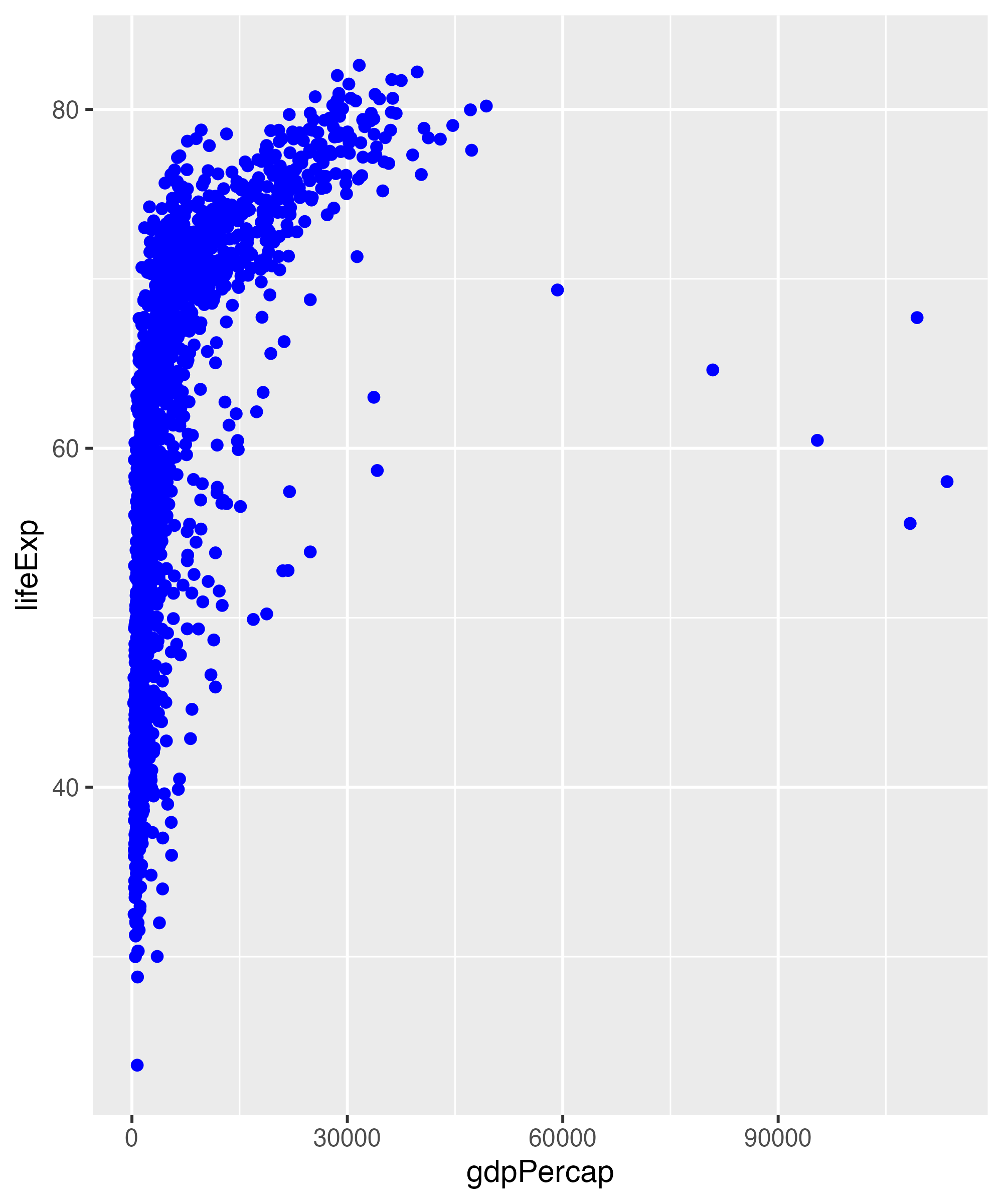
Same options different stuff


What Comes With ggplot
[1] "geom_abline" "geom_area" "geom_bar"
[4] "geom_bin_2d" "geom_bin2d" "geom_blank"
[7] "geom_boxplot" "geom_col" "geom_contour"
[10] "geom_contour_filled" "geom_count" "geom_crossbar"
[13] "geom_curve" "geom_density" "geom_density_2d"
[16] "geom_density_2d_filled" "geom_density2d" "geom_density2d_filled"
[19] "geom_dotplot" "geom_errorbar" "geom_errorbarh"
[22] "geom_freqpoly" "geom_function" "geom_hex"
[25] "geom_histogram" "geom_hline" "geom_jitter"
[28] "geom_label" "geom_line" "geom_linerange"
[31] "geom_map" "geom_path" "geom_point"
[34] "geom_pointrange" "geom_polygon" "geom_qq"
[37] "geom_qq_line" "geom_quantile" "geom_raster"
[40] "geom_rect" "geom_ribbon" "geom_rug"
[43] "geom_segment" "geom_sf" "geom_sf_label"
[46] "geom_sf_text" "geom_smooth" "geom_spoke"
[49] "geom_step" "geom_text" "geom_tile"
[52] "geom_violin" "geom_vline" Example(sort of)

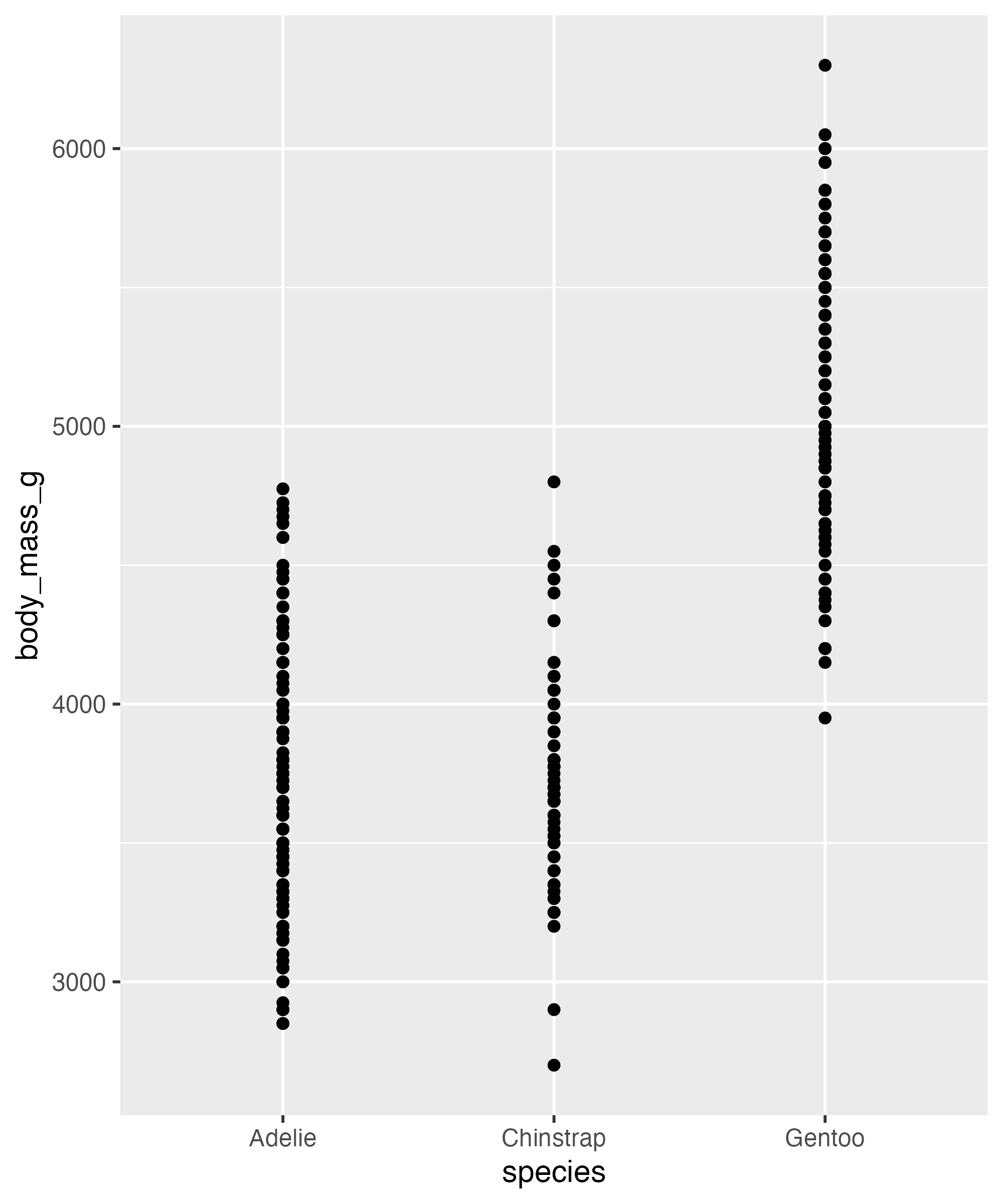
Your Turn
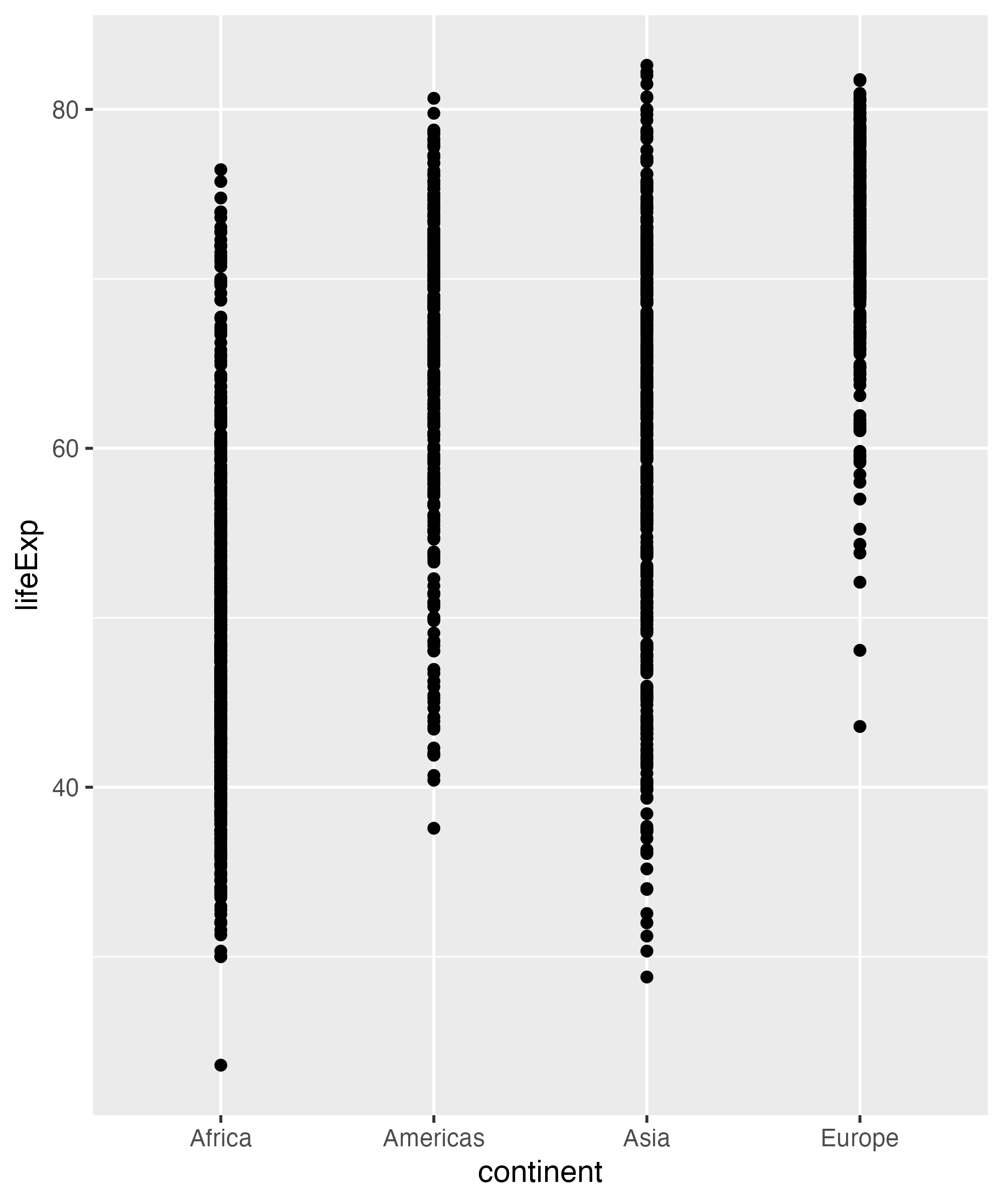

02:00
Answer
Your Turn Again
Hint do not supply a Y value

02:00
Your Turn
Make This Density Plot filled by continent

02:00
Complex graph!
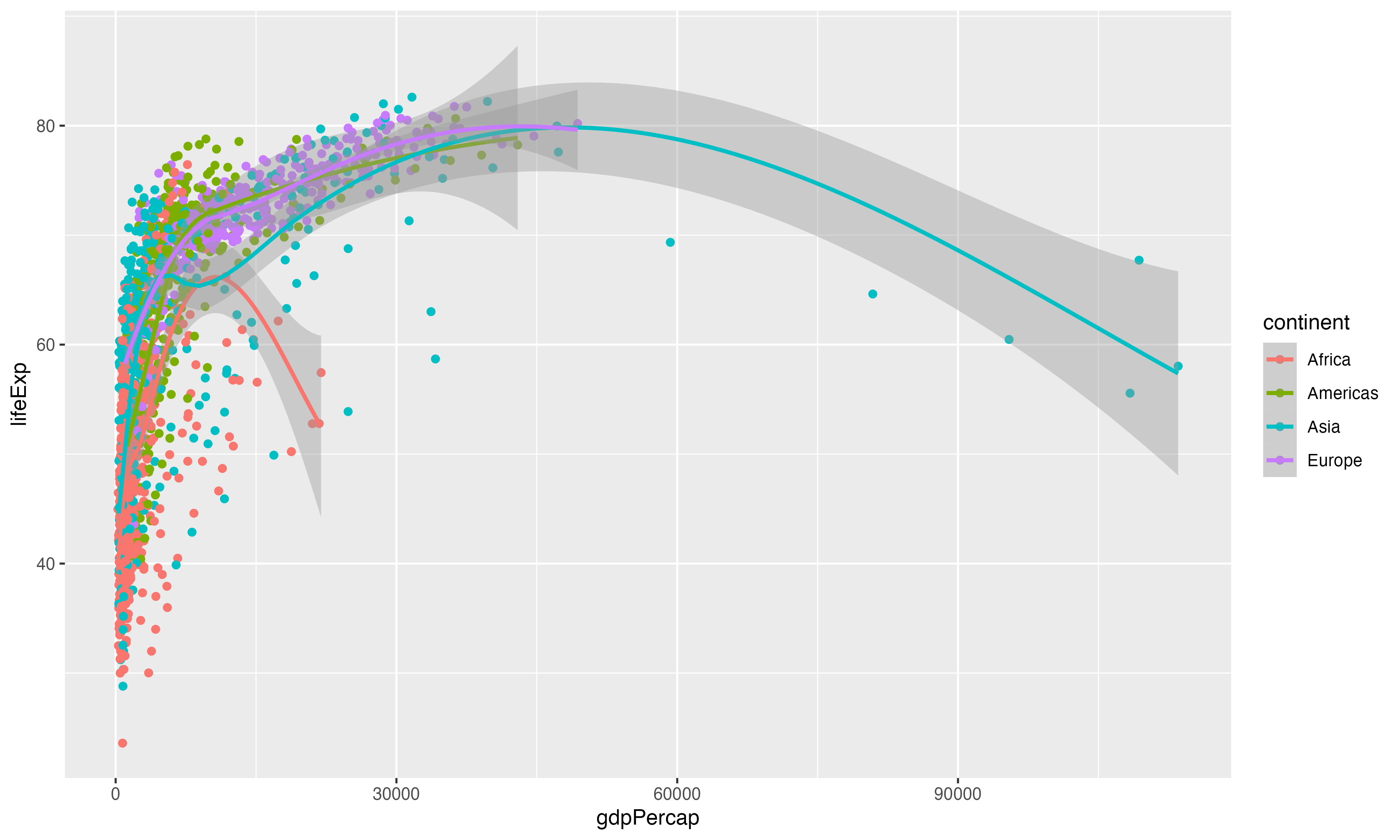
Local
Global
Building Plots
Starting with Data and aesthics
Add geom_point
Add geom_smooth
Change Transparency
Adjust scales with scale_x_log10
Add axis labels and title with labs
Add viridis color scale
Add theme
Facet by Continent
ggplot(gapminder,
aes(x = gdpPercap,
y = lifeExp,
color = continent)) +
geom_point(alpha = 0.5) +
geom_smooth() +
scale_x_log10() +
labs(x = "GDP per cap",
y = "Life Expectanty",
title = "The Effect of GDP per cap on Life Expectancy") +
scale_color_viridis_d() +
theme_bw() +
facet_wrap(vars(continent))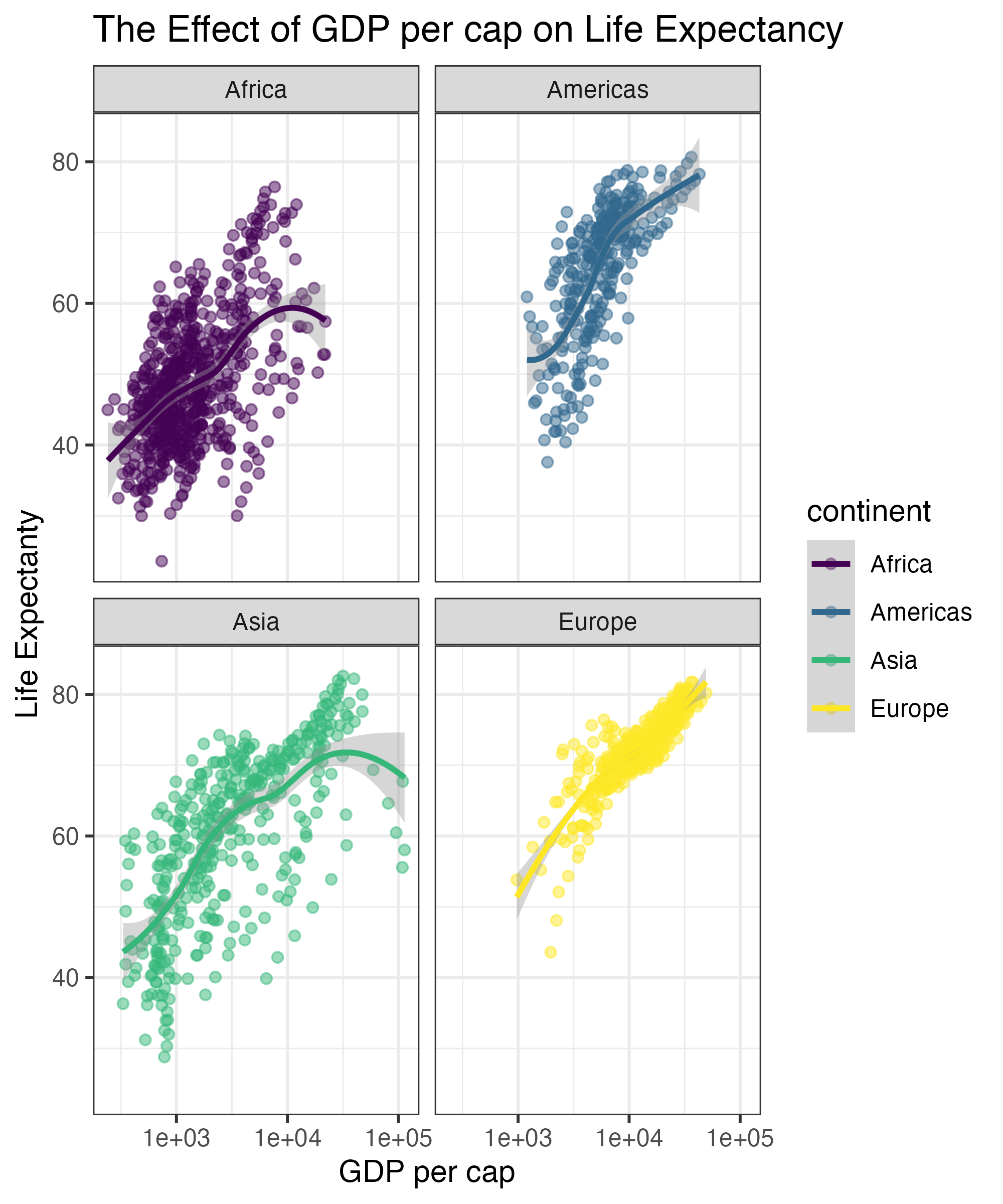
Change Theme Options
ggplot(gapminder,
aes(x = gdpPercap,
y = lifeExp,
color = continent)) +
geom_point(alpha = 0.5) +
geom_smooth() +
scale_x_log10() +
labs(x = "GDP per cap",
y = "Life Expectanty",
title = "The Effect of GDP per cap on Life Expectancy") +
scale_color_viridis_d() +
theme_bw() +
facet_wrap(vars(continent)) +
theme(legend.position = "none")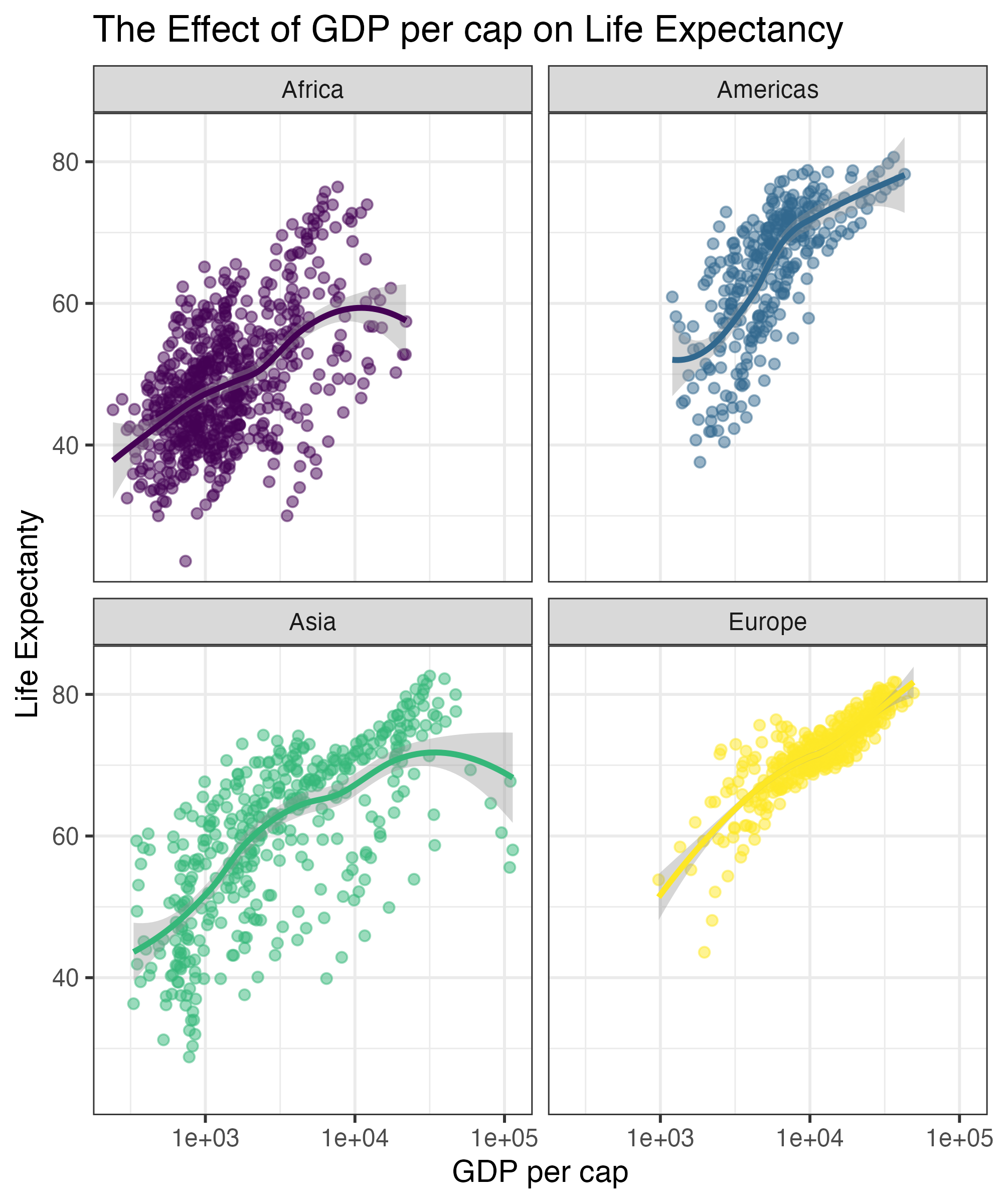
Scales
| Example layer | What it does |
|---|---|
scale_x_continuous()
|
Make the x-axis continuous |
scale_x_continuous(breaks = 1:5)
|
Manually specify axis ticks |
scale_x_log10()
|
Log the x-axis |
scale_color_gradient()
|
Use a gradient |
scale_fill_viridis_d()
|
Fill with discrete viridis colors |
Scales in Action
Scales in Action
Scales in Action
Scales
The scale_*() components control the properties of all the
aesthetic dimensions mapped to the data.
The extensions (*) can be filled by e.g.:
continuous(),discrete(),reverse(),log10(),sqrt(),date()for positionscontinuous(),discrete(),manual(),gradient(),gradient2(),brewer()for colorscontinuous(),discrete(),manual(),ordinal(),area(),date()for sizescontinuous(),discrete(),manual(),ordinal()for shapescontinuous(),discrete(),manual(),ordinal(),date()for transparency
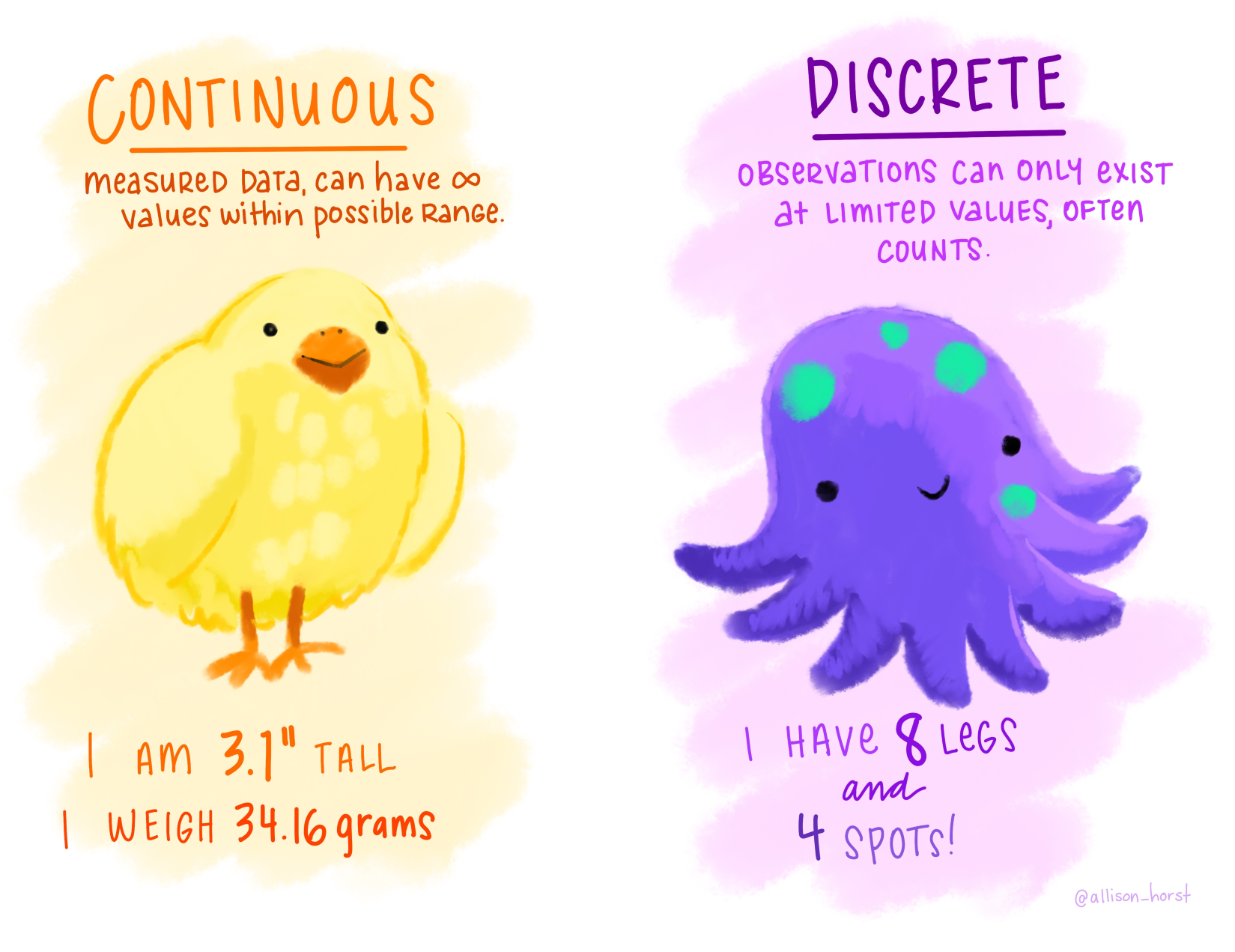
Illustration by Allison Horst
Continuous vs. Discrete in {ggplot2}
Continuous:
quantitative or numerical data
- height
- weight
- age
- counts
Discrete:
qualitative or categorical data
- species
- sex
- study sites
- age group
Continuous vs. Discrete in {ggplot2}
Continuous:
quantitative or numerical data
- height (continuous)
- weight (continuous)
- age (continuous or discrete)
- counts (discrete)
Discrete:
qualitative or categorical data
- species (nominal)
- sex (nominal)
- study site (nominal or ordinal)
- age group (ordinal)
Scales in Action
Coordinate Systems
= interpret the position aesthetics
- linear coordinate systems: preserve the geometrical shapes
coord_cartesian()coord_fixed()coord_flip()
- non-linear coordinate systems: likely change the geometrical shapes
coord_polar()coord_map()andcoord_sf()coord_trans()
Change the Limits of the plot
Circular Coordinate Systems
Your Turn
Change the colors of this density plot

04:00
How I Did It
Facets
| Example layer | What it does |
|---|---|
facet_wrap(vars(continent))
|
Plot for each continent |
facet_wrap(vars(continent, year))
|
Plot for each continent/year |
facet_wrap(…, ncol = 1)
|
Put all facets in one column |
facet_wrap(…, nrow = 1)
|
Put all facets in one row |
facet_wrap
facet_grid
facet_grid
Labels
| Example layer | What it does |
|---|---|
labs(title = “Neat title”)
|
Title |
labs(caption = “Something”)
|
Caption |
labs(y = “Something”)
|
y-axis |
labs(size = “Population”)
|
Title of size legend |
Labels with labs
ggplot(gapminder,
aes(x = gdpPercap,
y = lifeExp,
color = continent,
size = pop)) +
geom_point(alpha = 0.5) +
scale_x_log10() +
labs(title = "Health and wealth grow together",
subtitle = "Data from 2007",
x = "Wealth (GDP per capita)",
y = "Health (life expectancy)",
color = "Continent",
size = "Population",
caption = "Source: The Gapminder Project")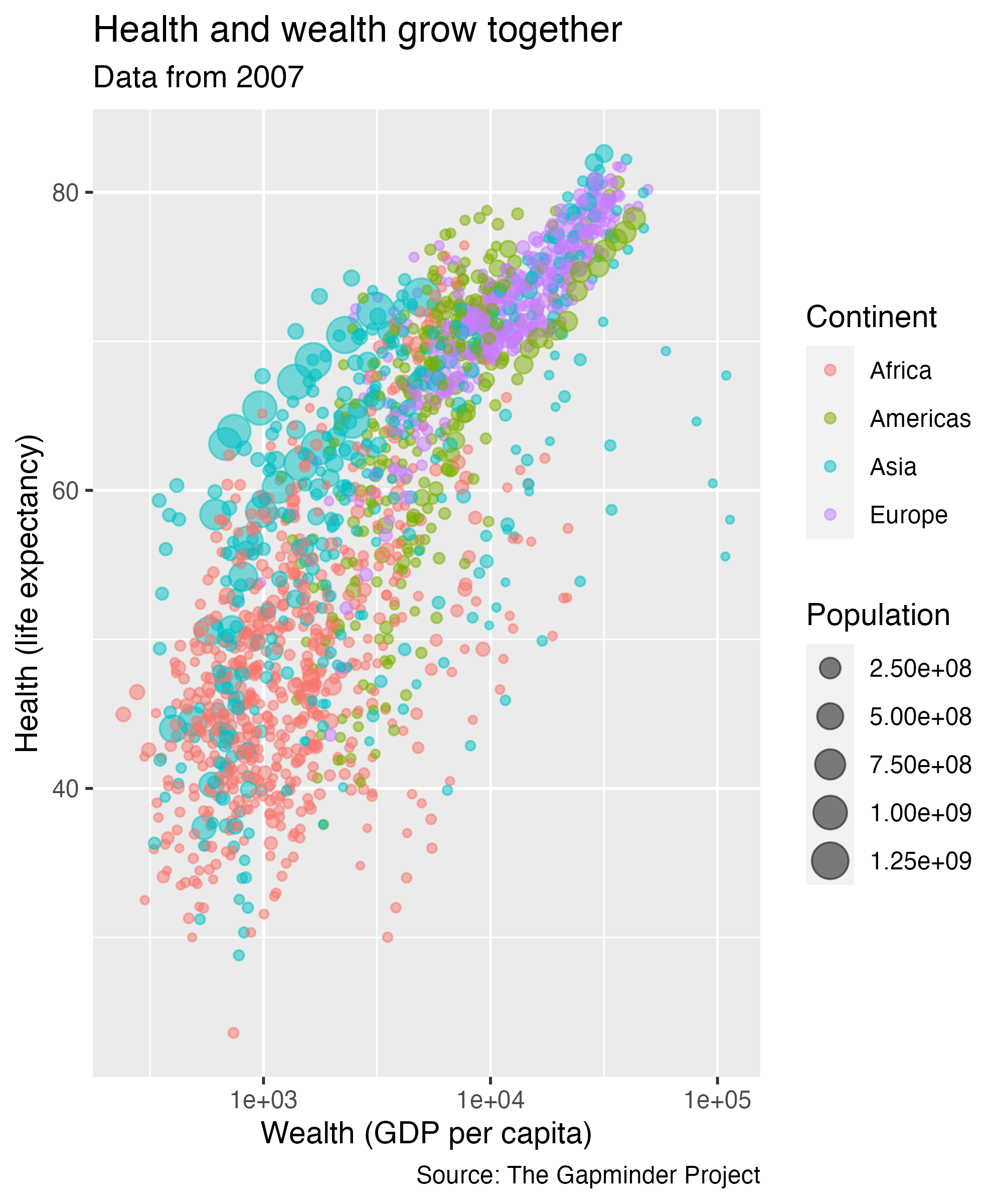
Changing the Default Theme
theme_minimal
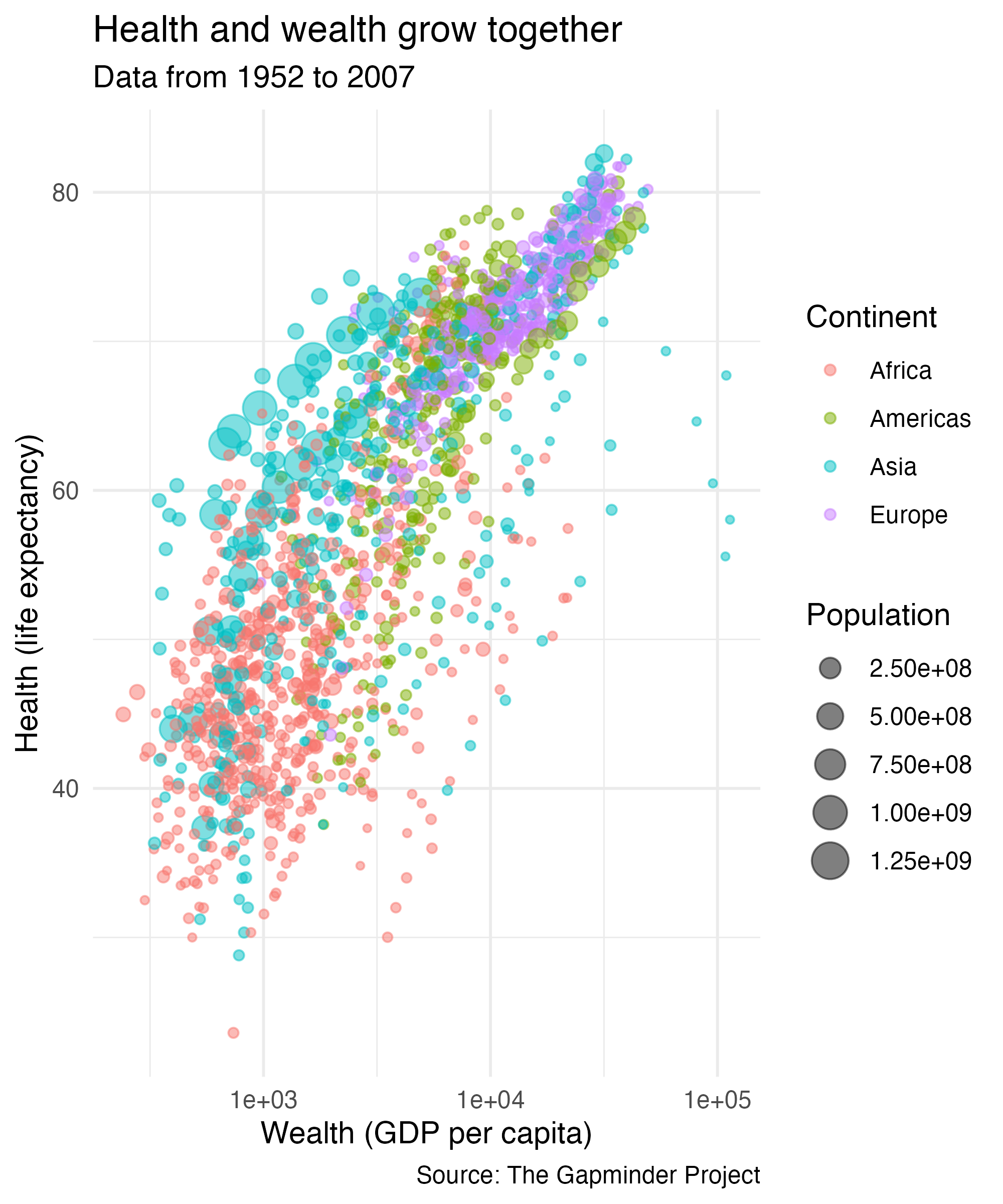
theme_dark

The theme argument
Has lots and lots of options(94 to be exact)
You can change basically anything you could think of in a plot
- My ggplot theme is basically just a some tweaks to theme arguments
Saving your work
Making Maps
New Packages
If you are on a Mac please go to the r-spatial-website if you run into problems
The workhorse for this particular section will be
sf
Mapping in R
R and ggplot can get you pretty far
The stuff from these workshops broadly apply
- including your dplyr verbs
Lots of your needs to make static maps can be met
Depending on what you are doing you may have to wait a bit
Map Made By Kieran Healy
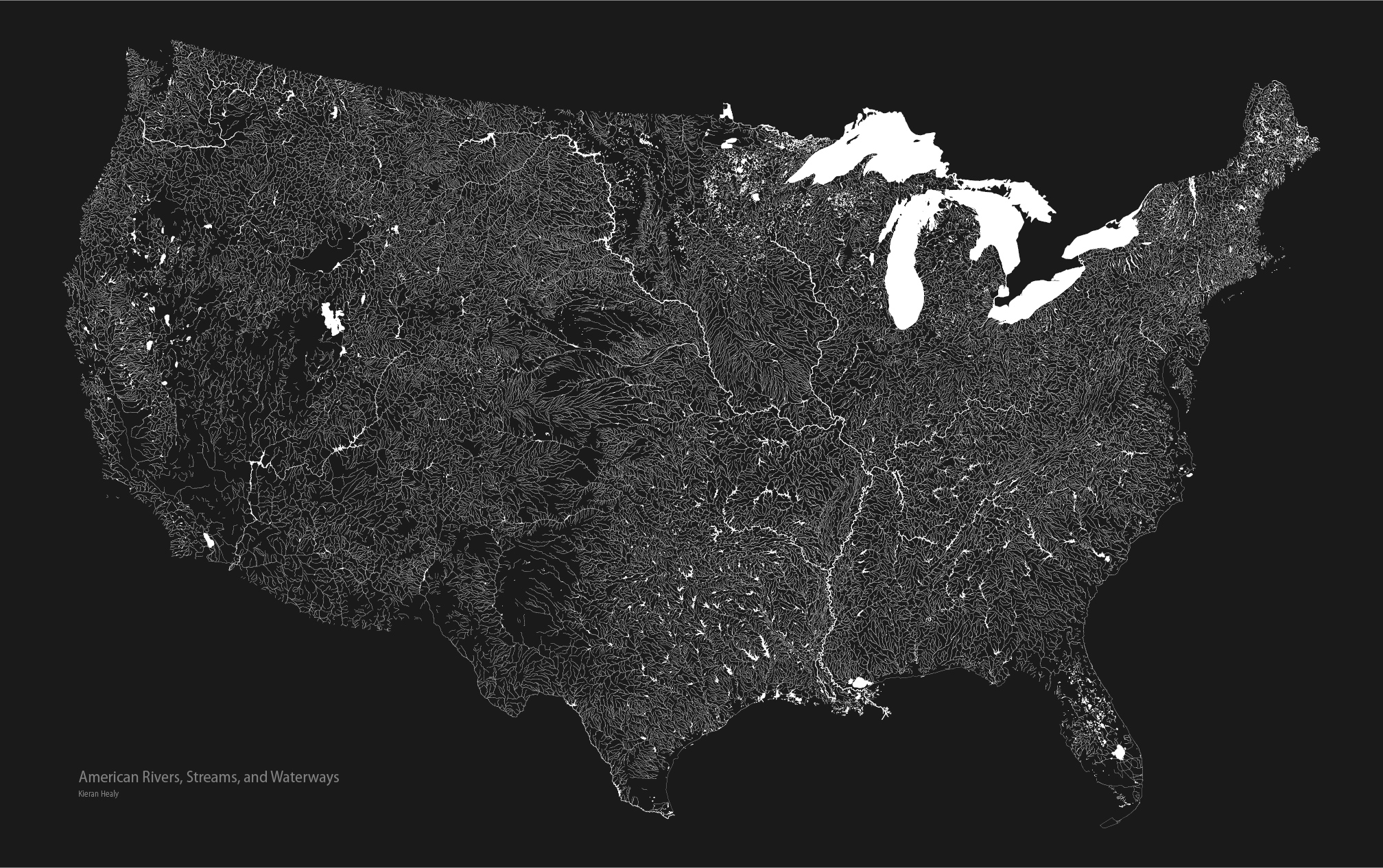
Shape Files
- To read in shape files you use
read_sfyou should see something that looks like this!
| NAME | geometry |
|---|---|
| Mordor | POINT (1330373 596482.5) |
| Hobbiton | POINT (515948 1043820) |
| Edoras | POINT (853993.3 723854.1) |
| Rivendell | POINT (884331.5 1057787) |
| Minas Tirith | POINT (1111425 621234.6) |
Making Maps in ggplot
Changing the Projections
Working Without Shape Files(kind of)
As is the case sometimes we do not have a shape file
Don’t worry
sfhas you coveredYou just need to feed it the right things
Making a Bespoke Shapefile
You can either feed it latitude and longitudes
Or you can feed it addresses
Most free ones have rate limits
- So be mindful of the size of your data
Making a Bespoke Shapefile(cont)
| city | geometry |
|---|---|
| Atlanta | POINT (-84.3881 33.74896) |
| Athens | POINT (-83.35888 33.95079) |
| Savannah | POINT (-81.08935 32.11319) |
Making a Bespoke Shapefile(cont)
library(tidygeocoder)
breweries_I_visit = tribble(
~name, ~address,
"Russian River Brewing", "725 4th St, Santa Rosa, CA 95404",
"Orpheus Brewing", "1440 Dutch Valley Pl NE, Atlanta, GA 30324",
"Three Tavens", "121 New St, Decatur, GA 30030",
"HenHouse Brewing Company", "322 Bellevue Ave, Santa Rosa, CA 95407"
)
breweries_geocode = breweries_I_visit |>
geocode(address, method = "osm")
breweries_geocode |>
st_as_sf(coords = c("long", "lat"), crs = st_crs("EPSG:4326")) |>
knitr::kable(format = "html")| name | address | geometry |
|---|---|---|
| Russian River Brewing | 725 4th St, Santa Rosa, CA 95404 | POINT (-122.7117 38.4418) |
| Orpheus Brewing | 1440 Dutch Valley Pl NE, Atlanta, GA 30324 | POINT (-84.36874 33.79355) |
| Three Tavens | 121 New St, Decatur, GA 30030 | POINT (-84.28488 33.77306) |
| HenHouse Brewing Company | 322 Bellevue Ave, Santa Rosa, CA 95407 | POINT (-122.7255 38.40122) |
Mapping Middle Earth
# using some programming read in everything iteratively
# there is probably a simpler solution but this worked for me
shapes <- list.files(path = "data/ME-GIS/", pattern = "*.shp", full.names = TRUE)
shapes_read = map(shapes, read_sf)
remove <- c("data/ME-GIS//", ".shp", "2", "02", "_18", "")
#https://stackoverflow.com/questions/29036960/remove-multiple-patterns-from-text-vector-r
shapes_names = shapes |>
str_remove_all(paste(remove, collapse = "|")) |>
str_to_lower()
names(shapes_read) = shapes_names
map(names(shapes_read), ~assign(.x, shapes_read[[.x]], envir = .GlobalEnv))
places = placenames |>
filter(NAME %in% c("Hobbiton",
"Rivendell",
"Edoras",
"Minas Tirith"))
mordor = placenames[placenames$NAME == "Mordor",]
mountains_to_label = mountains_anno[mountains_anno$name == "Erebor The Lonely Mountain",]
ggplot() +
geom_sf(data = contours,
size = 0.15,
color = "grey90") +
geom_sf(data = coastline,
size = 0.25,
color = "grey50") +
geom_sf(data = rivers,
size = 0.2,
color = "#0776e0",
alpha = 0.5) +
geom_sf(data = lakes,
size = 0.2,
color = "#0776e0",
fill = "#0776e0") +
geom_sf(data = forests,
size = 0,
fill = "#035711",
alpha = 0.5) +
geom_sf(data = mountains_anno, size = 0.25) +
geom_sf(data = places) +
geom_sf_label(data = filter(places, NAME !="Rivendell"),
aes(label = NAME),
nudge_y = 80000, size = 6) +
geom_sf_label(data = filter(places, NAME == "Rivendell"),
aes(label = NAME),
nudge_x = 88000, size = 6) +
geom_sf_label(data = mountains_to_label,
aes(label = name),
nudge_y = 80000, size = 6) +
geom_sf_label(data = mordor,
aes(label = NAME),
nudge_y = -10000, size = 6) +
theme_void() +
theme(plot.background = element_rect(fill = "#fffce3"))



